7-Step Advanced Social Media Marketing Blueprint: High-Impact Strategies for Dynamic Growth
As social media continues to evolve at a breakneck speed, what was trending last month might just as well be ancient history today. This fast-paced digital transformation can leave businesses scrambling to keep up. The good news is, you don't have to keep up with every minuscule change in the algorithm or trend on TikTok. At the end of the day, marketing is simple. You're communicating your value to fellow humans. Keep this in mind as we take you through these 7 more advanced steps for your social media marketing blueprint.
In this post, we'll discover how to refine your approach on social media with strategies that work for the long haul (plus some bonus insights on current trends at the end). We're looking to use the tool of social media to make meaningful, lasting connections with your ideal audience – to turn passive followers into active fans and casual likes into meaningful leads. So, what are we waiting for? It's time to revitalize your social media strategy and chart a course for sustainable business growth with 7 easy steps.
Recap of "Social Media Marketing Blueprint"
First things first: let's do a quick rewind on the "Social Media Blueprint." That guide was your first step into the broader, vibrant world of social media for business. We covered essential ground rules: pinpointing your goals because aimless actions lead nowhere fast, identifying your target audience because messages resonate more when they're directed, choosing the right platforms because each one has its unique flavor and audience, and selecting tools that simplify your life, not complicate it further.
This foundational blueprint acted as the groundwork upon which all advanced strategies are built. Think of it as the base camp for your ascent into the more challenging territories of social media marketing. Let's dive into how you can build upon that foundation and truly stand out in a crowded digital landscape.
Step 1: In-Depth Audience Analysis – Get to Know Your Audience Like Never Before

Alright, let’s talk about getting up close and personal with your audience. I mean, really digging into who they are beyond the usual “25 to 34-year-old, coffee-loving urban dwellers.” We’re going for more than just demographics here; we want to know their favorite Netflix series, the type of memes they share, and maybe, just maybe, why they think pineapple does (or does not) belong on pizza.
Going Beyond “Just the Facts”
First off, collecting comprehensive audience data is like being a social media detective. You’re on a mission to discover the who, what, when, where, and why of your audience’s online life. We'll get into how this applies to you and your business later.
Tools of the Trade
- Surveys and Questionnaires: Sure, nobody wakes up thinking, “I can’t wait to fill out a survey today!” But, if you keep it snappy, fun, and possibly reward them with a little something-something (discount codes, anyone?), you’ll be surprised at the valuable insights you can gather. Use platforms like SurveyMonkey or Google Forms to get the ball rolling.
- Social Media Analytics: Platforms like Facebook Insights, Instagram Analytics, and Twitter Analytics are like your social media crystal balls. They tell you who’s interacting with your content, when they’re most active, and what type of content turns them from silent followers into comment-leaving, share-happy advocates.
- Behavioral Analysis Tools: Want to get even fancier? Tools like Google Analytics, Hotjar, or Crazy Egg can show you how visitors navigate your website — what they click on, how far they scroll, and where you’re losing their attention. It’s like reading their digital body language.
- Conversations with Current/Past Clients: Sometimes, it's that simple. Identify a few clients who were perfectly suited for you – they needed what you offer, and you enjoyed working with them. Ask them questions about what drew them to you, what problem they were trying to solve, and take note of their demographic information, interests, and values.
Crafting Your Buyer Personas
Now that you’ve gathered your data, it’s time to create your buyer personas. Creating detailed buyer personas is like sketching a map of your ideal customers' minds. It’s an essential step in developing your Advanced Social Media Marketing Blueprint because it helps you understand who you’re talking to, what matters to them, and how you can genuinely connect. Let’s walk through the actual process of building these personas to sharpen your social media strategy.
Gather Your Data
Start with the rich data mine you’ve already collected through surveys, social media analytics, website behavior analysis tools, and conversations. This data is the raw material from which you’ll sculpt your personas. Look for patterns and commonalities in:
- Demographics (age, location, job title)
- Online behavior (which platforms they use, content they interact with)
- Challenges and pain points (what problems they’re looking to solve)
- Interests and values (what they care about, what motivates their decisions)
Segment Your Audience
Based on the patterns you’ve identified, begin segmenting your audience into distinct groups. Each group should represent a segment of your audience that shares common characteristics and behaviors. For example, one persona might be “Startup Steve,” a young entrepreneur looking for growth hacking tips, while another could be “Corporate Carla,” a mid-level manager seeking leadership advice.
Create Detailed Profiles
Now, dive deep into each segment to flesh out your personas. For each persona, you'll want to define:
- Name and Job Title: Give them a name and a role that reflects their segment, making them easier to visualize and remember.
- Demographics: Age, location, education level — the basics that give you a snapshot of who they are.
- Goals and Challenges: What are they trying to achieve, and what obstacles stand in their way? Understanding this helps you tailor content that resonates.
- Online Habits: Which social media platforms do they use? When and how do they prefer to consume content?
- Interests: What do they do for fun? What topics are they passionate about?
- Values: What principles guide their decisions? This could be sustainability, innovation, family, etc.
Bring Your Personas to Life
With your detailed profiles in hand, it’s time to bring your personas to life. Create a document for each persona that includes all their details. Add a stock photo or an illustration to give them a face. The goal is to make these personas feel almost like real people you could meet.
Use Personas to Guide Your Strategy
Refer to these personas when planning your content, campaigns, and engagement strategies. Each piece of content, each post, and each interaction should be designed with one or more of your personas in mind. Ask yourself, “Would ‘Startup Steve’ find this useful? Does this address ‘Corporate Carla’s’ challenges?”
By integrating detailed buyer personas into your Advanced Social Media Blueprint, you transform your strategy from a one-size-fits-all approach to a personalized conversation. This not only elevates your brand’s relevance and appeal, but also significantly boosts engagement and conversion rates. Remember, the better you know your audience, the more effectively you can speak their language, meet their needs, and win their trust.
Step 2: Leveraging AI and Automation in Your Advanced Social Media Blueprint

Welcome to the future, where AI doesn't just mean "Artificial Intelligence" but also "Absolutely Indispensable" in your Advanced Social Media Marketing Blueprint. Let's face it, keeping up with the 24/7 demands of social media can feel like trying to juggle while riding a unicycle – challenging, if not downright precarious. That's where AI and automation come into play, transforming you from circus act to ringmaster in your social media strategy.
AI Technologies: Predicting Content Performance
AI technologies are powerful tools that analyze patterns, trends, and interactions to accurately predict the performance of your future social media posts. This means you can effectively plan when to post and what type of content will resonate most with your audience. AI tools offer data-driven insights, enabling you to optimize your strategy for better engagement and results.
Automation in Action: Your Social Media Sidekicks
- Chatbots for Customer Service: Ever wished you could clone yourself to answer customer queries around the clock? Chatbots are your next best option. These tireless digital assistants handle FAQs, booking appointments, and even lead generation, making sure your audience feels heard without you losing sleep or sanity.
- Scheduling Tools: If you've ever forgotten to post at the "optimal time" because, well, life happens, scheduling tools will be your new best friends. Platforms like Buffer, Hootsuite, or Later allow you to plan and schedule your content in advance. It's like meal prepping for your social media – do the work upfront, then sit back and enjoy your well-balanced diet of posts going live when your audience is most likely to engage.
- Automated Analytics: Keeping track of your social media performance doesn't have to be a dive into spreadsheet hell. Automated analytics tools can track your key metrics, compile reports, and even highlight areas for improvement. It’s like having a personal social media advisor who’s really good at math.
Other Ways to Use AI for Social Media Success
Content Creation and Optimization
Imagine an assistant that helps draft your posts, suggests improvements, and optimizes content for each platform. Tools leveraging natural language processing can generate engaging captions, create varied content formats, and even recommend hashtags.
- Copy.ai is an AI-powered tool designed to help you generate creative content quickly. Whether you need engaging captions, blog post ideas, or social media posts, Copy.ai can provide numerous suggestions within seconds. Simply input a brief description of the content you need, and the tool will generate several options for you to choose from or draw inspiration.
- Jasper is another powerful AI content creation tool that excels in producing high-quality, varied content formats suitable for different social media platforms. With Jasper, you can create everything from detailed blog posts to concise tweets. Provide Jasper with a topic and a tone of voice, and it will craft content tailored to your needs. Jasper also offers features for improving existing content, making it more engaging and platform-optimized.
Trend Spotting and Sentiment Analysis
You may not have time to scroll through feeds all day to spot trends, but AI does. It can analyze vast amounts of social media data to spot emerging trends, giving you a heads-up on what's about to blow up. Plus, sentiment analysis tools dig into the emotions behind the comments and shares, letting you gauge public opinion on topics related to your brand. This way, you can adjust your strategy in real-time, keeping your content relevant and resonant.
- BuzzSumo allows you to quickly identify trending topics and content across social media platforms. Use its search feature to find content that's gaining traction in your niche, then leverage these insights to create relevant and timely posts.
- Brand24 offers real-time sentiment analysis, helping you understand the public perception of your brand or specific topics. Monitor mentions and sentiments to adjust your messaging strategy proactively, ensuring it aligns with audience perceptions.
Personalized User Experiences
AI takes personalization to the next level. By analyzing individual user behavior, AI can tailor the social media experience for each follower. From personalized content recommendations to customized messaging, AI ensures that your audience sees more of what they like, increasing engagement and loyalty. It's like having a concierge for each follower, guiding them through a curated journey of your content.
- Salesforce Marketing Cloud uses AI to personalize customer journeys across social media channels. By analyzing user interactions, it can automate personalized messaging, suggesting content based on individual preferences and behaviors.
- Marketo excels in segmenting audiences for personalized campaigns. Utilize its AI capabilities to deliver tailored messages and content recommendations, enhancing user engagement and loyalty.
Advanced Audience Insights
Beyond basic analytics, AI can unearth deep insights about your audience. By analyzing engagement patterns, click-through rates, and even the types of visuals that perform best, AI helps paint a detailed picture of your audience's preferences. This allows for hyper-targeted campaigns and content strategies that hit the mark every time.
- Crayon uses AI to track and analyze your competitor's digital footprint across the web, including social media channels. This intelligence allows you to understand not just your audience but also how they interact with competitors. By monitoring changes in competitor messaging, product launches, and customer feedback, Crayon helps you identify gaps in your own strategy and opportunities for differentiation. Use Crayon to adjust your content and campaigns based on real-time market dynamics and audience preferences.
- Pulsar is an AI-powered audience intelligence platform that goes beyond traditional analytics to understand audience behavior, interests, and sentiment. By analyzing data from social media conversations, search queries, and other digital footprints, Pulsar provides detailed insights into what your audience cares about. These insights can inform content creation, campaign planning, and overall strategy, ensuring that your efforts resonate with your target audience on a deeper level.
Efficient Ad Management
Running social media ads? AI can optimize your ad spend, targeting, and creative selection. By constantly analyzing the performance of your ads and adjusting parameters in real time, AI ensures your budget is used efficiently, reaching the right people with the right message at the right time.
- Revealbot automates the process of managing and optimizing Facebook, Instagram, Google Ads, and Snapchat campaigns. It uses AI to make real-time adjustments to your ad campaigns based on performance data. With Revealbot, you can set up custom automation rules for scaling ads, pausing underperforming ones, or reallocating budgets to the most effective campaigns. This ensures that your ad spend is always directed towards the highest-performing ads without manual intervention.
- Smartly.io automates ad operations and optimization, using AI to adjust bidding strategies and creative placements. It's particularly useful for scaling campaigns while maintaining a high ROI.
Incorporating AI and automation into your Advanced Social Media Marketing Blueprint isn't just about making life easier (though that's a big part of it). It's about leveraging technology to enhance your strategy, ensuring you’re always two steps ahead in the game. So, let’s embrace our robot helpers and propel our social media presence into the stratosphere of efficiency and effectiveness.
Step 3: Data-Driven Content Strategy - Supercharging Your Advanced Social Media Marketing Blueprint
Let's dive into making your Advanced Social Media Marketing Blueprint not just good, but great, with a data-driven content strategy. Here’s the breakdown:
Mastering Social Listening and Sentiment Analysis
First, let's tackle social listening and sentiment analysis. You don't need to don a Sherlock Holmes cap (unless you want to, no judgment here), but you do need the right tools. Platforms like Brandwatch or Mention can keep an ear to the ground, or rather, the internet, for you. They'll help you track what people are saying about your brand across social media, blogs, and forums.
Looking for analysis? Tools like Hootsuite Insights go a step further, breaking down emotions and sentiments behind the chatter. This is how you spot trends, understand pain points, and even catch a few compliments or criticism about your brand. Set up alerts for your brand name, competitors, and relevant keywords, and keep this monitoring constant. Social media never sleeps, and neither should your analysis tools (though you definitely should).
Getting Smart with A/B Testing
Want to know if your audience prefers cats or dogs in your product photos? A/B test it. Wondering if “Click Here” works better than “Learn More”? There’s an A/B test for that. A/B testing allows you to send two versions of content into the wild and see which one performs better. It's all about tweaking small elements to discover what resonates best with your audience.
- How? Use tools like Facebook's A/B testing feature for ads or Sprout Social for organic posts. Create two versions of your content with one key difference between them.
- When? Before major campaigns or when you're trying out new content formats. Also, on Tuesdays. Just kidding about the Tuesdays (or are we? A/B test it!).
- Where? Start with platforms that offer robust analytics and testing features, like Facebook, Instagram, or your email marketing software.
Refining Your Strategy with Regular Data Reviews
Constantly refining your strategy ensures that it stays relevant and effective. Use insights from your social listening, sentiment analysis, and A/B testing to inform your decisions.
- Schedule monthly reviews of your analytics. Look for patterns in engagement, reach, and conversion rates.
- Besides the monthly deep dive, do a quick weekly check to stay agile.
- Check on all platforms you're active on, but pay special attention to where your key demographics spend their time.
With this approach, your strategy evolves based on direct feedback from your audience's interactions and behaviors. This continuous loop of listening, testing, and refining keeps your social media efforts focused and effective, driving better results for your business. By following these steps, you turn your Advanced Social Media Blueprint into a dynamic tool that adapts and grows with your audience.
Step 4: Advanced Targeting and Personalization in Your Advanced Social Media Blueprint
Onto the fourth step of your Advanced Social Media Blueprint, we focus on making each of your audience members feel like you're speaking directly to them. This is where advanced targeting and personalization come into play, turning broad strategies into pinpoint tactics.
Utilizing Advanced Targeting Features on Social Media Platforms
Social media platforms offer a treasure trove of targeting options that allow you to reach specific subsets of your audience with precision. These features enable you to go beyond basic demographics to include user interests, behaviors, job titles, and even purchasing habits.
- How? In the ad manager section of platforms like Facebook or LinkedIn, you'll find options to refine your audience based on these detailed criteria. The goal is to use this data to tailor your ads to match the specific needs and interests of different audience segments.
- Why? Effective targeting ensures that your content and ads are shown to the people most likely to be interested in them, increasing the relevance of your message and improving engagement rates.
Creating Dynamic and Personalized Ad Campaigns
Dynamic and personalized ad campaigns adjust their content in real-time based on user interactions with your brand. This approach allows you to present the most relevant ad to each user, based on their past behavior and interactions with your website or social media pages.
- How? Utilize tools like Facebook's Dynamic Ads or Google's Responsive Ads. These platforms let you create ads that automatically adjust content based on user interactions.
- Why? Because personalization is key in a world where everyone is bombarded with information. It's about making your message stand out by making it relevant and tailored. Plus, it shows your audience that you're paying attention to what they want and need.
When you harness the power of advanced targeting and personalization, you're not just throwing content out into the universe and hoping it sticks. You're strategically placing it where it'll make the most impact, ensuring your Advanced Social Media Blueprint not only reaches the right audience, but resonates with them on a personal level. And that, my friends, is how you turn casual browsers into loyal customers, one personalized interaction at a time.
Step 5: Boosting SEO and Syncing Your Marketing Channels in Your Advanced Social Media Blueprint
Moving on to step five of your Advanced Social Media Blueprint, we're diving into the world of SEO and knitting together your marketing channels. Now, before you yawn and think this is going to be like watching paint dry, hear me out. This step is about expanding your digital presence to epic proportions, setting the stage for your brand to leave a mark online that's unmistakable.
Social Media's Impact on SEO
While social media might not directly influence search engine rankings, it plays a crucial role in driving web traffic and increasing your site's visibility. Here’s how:
- Keywords in Posts: Incorporating relevant keywords into your social media content can help improve your visibility. It's about naturally integrating these keywords into posts to reach a wider audience.
- Link Sharing: Sharing links to your website or blog on your social media platforms can significantly increase traffic to your site. More traffic can lead to higher search engine rankings over time.
Coordinating Your Marketing Efforts
For a truly effective digital marketing strategy, it’s essential that all your channels – social media, email, and website – are aligned and complement each other.
- Unified Messaging: Use a content calendar to plan out your messages across all platforms. This ensures that you're consistently communicating with your audience, regardless of the channel they're using.
- Cross-Promotion: Promote content across different channels. For example, use social media to tease an upcoming newsletter feature or use email campaigns to drive your subscribers to your latest social media contest.
- User Experience: Make navigating between your social media platforms, website, and email as seamless as possible. Include clear calls to action and make sure that your website is mobile-friendly, since many users will be accessing it from their phones.
Following these steps help you enhance the role of social media in your SEO efforts and create a cohesive experience across all marketing channels. This not only builds a stronger online presence, but also creates a more engaging and unified brand experience for your audience.
Step 6: Mastering Analytics for Strategic Insights
Here we are at the analytics stage of our Advanced Social Media Marketing Blueprint, where the focus shifts from creating content to understanding its impact. No more throwing content out there and hoping for the best. Now, we dive into the analytics to see what's actually resonating with your audience, what's extending your reach, and, crucially, what's driving conversions. It's about getting up close and personal with the numbers to guide your future strategies.
Understanding the Core Metrics
Let’s break down the analytics beast into manageable chunks. This isn't about obsessing over every like or retweet. It's about understanding the metrics that matter: engagement, reach, and conversion. These are your signposts on the road to social media success.
- Engagement: It's not just who likes your posts, but who comments, shares, and interacts with them. High engagement means you're doing something right. Look beyond the surface to see who's interacting with your posts. High engagement signals content that resonates, encouraging you to keep the conversation going.
- Reach: This tells you how far your content is traveling. Is it staying local, or is it jet-setting around the digital world? Understanding reach helps you know if your content is staying in your intended audience’s orbit or if it’s reaching new frontiers.
- Conversion: The ultimate goal. This is where you find out if all those likes and shares are turning into sign-ups, sales, or whatever action you’re aiming for. It’s the moment of truth, where you find out if your social media efforts are more than just digital window shopping.
Translating Data into Action
The real trick is turning this data into a game plan for content that hits the mark every time.
- Spot Patterns: Look for trends in your data. Do some types of posts consistently outperform others? Is there a time when your audience is more engaged? These insights are gold for planning future content.
- Test and Tweak: Use what you've learned to experiment. More engagement with videos? Make more. A certain call to action driving clicks? Use it more often. It’s all about fine-tuning.
- Benchmark: Set clear goals based on your analytics. Having targets provides direction and a way to measure success over time.
- Keep Learning: The online world changes rapidly. What works now may not work next month, so stay nimble. Keep analyzing your data, learning from it, and adjusting your strategy accordingly.
By diving into analytics, you're not just collecting numbers; you're gathering insights that inform every aspect of your social media strategy. It's about making choices that are driven by data, ensuring your content is always moving you closer to your business goals. So, roll up your sleeves and let those numbers guide you to a more impactful social media presence.
Step 7: Staying Ahead with Emerging Trends and Technologies
We've arrived at the final leg of our Advanced Social Media Marketing Blueprint, focusing squarely on the future: the latest trends and technologies in social media marketing. This step is all about understanding what's new, what's effective, and how to keep your strategy not just current, but forward-thinking.
Current Trends in Social Media Marketing
Let’s look at a few developments shaping social media today:
- Ephemeral Content: Content that disappears after a short period, such as Instagram Stories or Snapchat posts, is gaining traction. It engages users by creating a sense of urgency to view before it vanishes, driving higher interaction rates. It also encourages a more raw, less polished type of content, since it won't have a permanent place on the user's profile.
- Social Commerce: Platforms are making it easier for users to shop directly through social media. With features allowing in-app purchases, businesses can streamline the shopping experience, potentially boosting sales directly from social media activities.
- Influencer Partnerships: Collaborating with influencers continues to be a powerful way to extend your reach. The key is to partner with influencers whose audience aligns with your target market, ensuring that your message is seen by potential customers.
Embracing Adaptability and New Technologies
In the ever-changing landscape of social media, staying adaptable is crucial. Here’s how you can embrace flexibility in your strategy:
- Stay Informed: Regularly research and read up on the latest social media developments. Being aware of new platforms and features can help you assess what might be beneficial for your brand.
- Be Willing to Experiment: Test new platforms and features on a smaller scale to gauge their effectiveness for your audience. This can include trying out new content formats or marketing techniques.
- Listen to Your Audience: Feedback and engagement metrics from your audience are valuable indicators of what trends or platforms are resonating with them. Use this feedback to inform your strategy.
- Maintain Flexibility in Your Strategy: The ability to quickly adjust your strategy in response to what’s working and what isn’t is vital. This might involve reallocating resources, exploring new content types, or adjusting your engagement tactics.
Keeping your strategy adaptable allows you to navigate the fast-paced changes in social media marketing successfully. Staying on top of emerging trends and being open to integrating new technologies into your strategy ensures that your Advanced Social Media Blueprint remains effective and relevant. This approach involves regularly updating your tactics in response to the evolving digital landscape, which might include exploring new content types, adjusting your engagement strategies, or reallocating resources based on performance insights.
Wrapping Up Your Advanced Social Media Blueprint Journey
And there you have it, folks – we’ve navigated through the ins and outs, ups and downs, and all the around-the-corners of creating an Advanced Social Media Blueprint. From tuning in to your audience with social listening to playing nice with algorithms through SEO, each step of this blueprint is designed to take your social media presence from "just okay" to "oh wow."
Remember, this isn’t a set-it-and-forget-it kind of deal. Social media is as stable as a pogo stick on a tightrope – okay, maybe that’s a slight exaggeration, but you get the picture. It’s always changing, which means your strategy should be as flexible as a gymnast aiming for gold. Keep testing, keep learning, and keep adapting. That’s the secret sauce for staying ahead in the game.
Don’t Just Stand There, Dive In!
Feeling overwhelmed? Excited? A bit of both? That’s perfectly normal. Upgrading your social media strategy using these steps can seem like a daunting task, but you don’t have to do it alone. This is where Just Digital swings into action – not on a vine, but with solid expertise and a track record to back it up.
Think of us as your social media strategists, ready to help you fine-tune or overhaul your social media plan with an Advanced Social Media Blueprint tailored just for you. Whether you're looking to deep dive into analytics, make your content strategy more dynamic, or simply get a better handle on what’s trending, we’ve got your back.
So, why wait? Reach out to Just Digital today for a consultation or to scoop up more resources that can help elevate your social media game. Let’s make your brand the one that others aspire to be, together. Your journey to a high-impact social media presence starts now – and we’re here to guide you every step of the way.
5 Ways a Marketing Advisor Can Transform Your Business
If you're hoping to stand out in the crowded digital marketplace, you're up for a mammoth of a challenge without the help of a marketing advisor. Sure, you've got something awesome to share, but catching the eye of your audience? That's a whole other ballgame, especially for the smaller businesses and startups out there. You're up against the big players, with their flashy ads and hefty marketing budgets, making it super tricky for your business to get a slice of the spotlight.
This is where the magic of a marketing advisor comes into play. Think of them as your personal guide in the vast wilderness of the digital marketplace. Whether you're looking for a digital marketing advisor to boost your online presence, an advertising advisor to craft your message perfectly, or a market advisor to help you understand where your business fits in the grand scheme of things, these pros have got your back.
They help you figure out the best way to talk to your audience, making sure your message hits home every time. They're the folks who know all about the latest trends, from which social media platform is blowing up to the newest ways to connect with customers online. And for those just starting out, a marketing consultant for startups can offer invaluable advice to get you moving in the right direction.
But it's not just about throwing money at ads and hoping for the best. These advisors help you craft strategies that make sense for your business, targeting the right people with the right message at the right time. They help you make the most of your marketing budget, ensuring that every penny you spend is an investment in growing your business.
For the businesses that feel like they're shouting into the void, an expert marketing advisor can turn things around. With their guidance, you can make your business not just seen, but heard, and not just heard, but remembered.
So, whether you're a startup on the brink of something big or a small business looking to level up, remember that you don't have to go it alone. There's a whole world of marketing advisors, digital marketing advisors, and advertising advisors ready to help you make your mark. With the right strategies, advice, and a bit of marketing savvy, your business can shine bright, even in the most crowded of marketplaces.
1. Strategic Marketing Planning
According to a study by CoSchedule, marketers who proactively plan their projects or campaigns are 356% more likely to report success. Strategic marketing planning is where a marketing advisor shines, meticulously crafting strategies that are not just good on paper but bring real, measurable results. They dive deep into understanding a business's goals—like boosting your sales, getting more people to know about your brand, or launching something new and exciting. They take all this and whip up a marketing plan that fits your business like a glove.
Making sure your marketing moves are in sync with what you want your business to achieve is super important. A marketing advisor is there to make sure that every move you make, every ad you run, and every blog post you write is all pulling in the same direction—towards your big goals. This way, you're not just throwing your efforts everywhere, but focusing on what really matters and getting solid results.
Let's paint a picture to show you how this works: Picture a cool, little clothing shop that's all about eco-friendly fashion. They want to make a bigger splash in the green fashion scene. Enter the marketing advisor. They kick things off by digging into who wants to buy eco-friendly clothes and what the competition is like. Then, they roll out a plan that covers all bases—social media buzz about the brand's green mission, teaming up with influencers to spread the word, and crafting stories and articles that show why sustainable fashion matters. This whole plan is laser-focused on making the brand a big name in eco-fashion. Fast forward a bit, and you've got more people talking about the brand and sales ticking up.
This is what a marketing advisor does best—guiding your business with a strategy that's all about hitting those goals. With a marketing advisor in your corner, you're not just taking shots in the dark; you're making smart, targeted moves that help your business grow and get noticed.
2. Enhancing ROI on Marketing Investments
Getting the most bang for your buck in marketing is crucial for any business wanting to grow without just throwing money into the wind. That's where a marketing advisor steps in—they're like your personal guide to making sure every dollar you spend on marketing really counts. Let's break down how they do it.
First off, marketing advisors have a knack for picking out the best places to show off your ads or posts. It's like choosing the best fishing spot in a huge lake. They look at all the options—be it social media, emails, or even old-school flyers—and figure out where you're most likely to catch the attention of your kind of customers.
Then, there's the detective work. Marketing advisors are good at playing detective with your marketing efforts. They use analytics tools to keep an eye on how well your ads or social media posts are doing so they can adjust as necessary. If you're not in the advertising world, for example, it's difficult to know when to give a campaign more time or adjust to improve it, or change strategies altogether. A marketing advisor will have more insight based on years of experience analyzing data for marketing.
Based on the information gathered, your marketing advisor helps you make smart moves with your money. Say your Instagram posts are getting lots of love and getting results, but your emails are struggling. They might suggest putting more of your budget into Instagram where it's making a real difference. It's all about moving your money to where it'll do the most good.
Marketing advisors help you play your marketing game smarter. They make sure you're not just spending, but investing in your business's growth. With their help, you can make sure your marketing efforts aren't just a shot in the dark, but a strategic move to win big. So, whether you're just starting out or looking to level up, remember, you don't have to figure it all out on your own. A marketing advisor can be the ace up your sleeve, helping your business stand out and shine, even in the busiest of marketplaces.
3. Improved Brand Positioning and Visibility
In today's saturated market, a distinct brand identity and high visibility are essential for success. A Forbes study highlights that consistent brand presentation across all platforms increases revenue by up to 23%. A marketing advisor plays a crucial role in not just shouting your brand's name from the rooftops, but making sure the right people hear it, understand it, and remember it. They're the ones who help you pinpoint what makes your brand special—your unique value propositions—and then craft the perfect way to share that with the world. They'll help you tell your brand's story in a way that resonates, sticks, and distinguishes you from the crowd.
When it comes to standing out in a market that's packed to the brim with options, strategies from a marketing advisor can be a game-changer. They might steer you towards innovative social media campaigns that cut through the noise, SEO tactics that get your website seen by the right eyes, or even old-school methods with a new twist, like guerrilla marketing tactics that create buzz in unexpected ways. The goal? To make sure when someone thinks of your industry, your brand pops up first in their mind.
But here's the thing—being seen is only part of the battle. Consistency in your brand message across all marketing channels is what builds trust and loyalty. A marketing advisor ensures that whether someone stumbles upon your brand on Instagram, reads an email from you, or sees your ad on a billboard, the message they get is unmistakably you. This consistent branding is what cements your place in the market and in the minds of your customers.
To put this into perspective, consider a local coffee shop that prides itself on its community vibe and ethically sourced beans. A marketing advisor could help them highlight these unique selling points through storytelling on social media, content marketing that dives deep into the journey of their coffee beans, and community events that bring their brand's story to life. By weaving their unique value proposition into every piece of marketing and ensuring that message is consistent everywhere, the coffee shop can stand out from the chain cafes and become a beloved spot known for more than just great coffee.
In essence, the expertise of marketing advisors—whether they're digital marketing advisors, branding advisors, or advertising advisors—is invaluable in navigating the complexities of today's market. They equip businesses with the strategies needed for improved brand positioning and visibility, ensuring that your brand doesn't just blend into the background but becomes a beacon for your target audience.
4. Leveraging Data for Customer Insights
Leveraging customer data effectively can lead to significant improvements in product development, targeting, and personalization efforts. According to McKinsey, organizations that leverage customer behavior data to generate insights outperform peers by 85% in sales growth and more than 25% in gross margin. Marketing advisors utilize data analytics to understand customer preferences and behaviors deeply. This information allows businesses to develop products that meet specific market needs, segment their audience more accurately, and tailor marketing communications to individual preferences, significantly enhancing customer engagement and loyalty. Marketing advisors analyze various sources of data, including website analytics, social media interactions, and customer feedback, to gather insights about what customers are looking for, their buying patterns, and how they engage with brands. This data-driven approach is essential for making informed marketing decisions that are aligned with customer needs and expectations.
Data-driven decision-making in marketing is crucial because it allows businesses to allocate their resources more effectively, target their marketing efforts, and achieve better outcomes from their marketing campaigns. Marketing advisors rely on data to identify the most effective marketing channels, tailor messages to specific audience segments, and optimize campaigns in real time for better performance.
Here's how leveraging data for customer insights can play out in real-world scenarios:
- Product Development: Imagine you're launching a new line of fitness gear. A marketing advisor, armed with data on current fitness trends and consumer feedback, might identify a gap in the market for eco-friendly workout clothes. This insight allows you to tailor your product development to meet a specific, growing demand, positioning your brand as both innovative and responsive to consumer values.
- Targeting and Segmentation: Data analytics can reveal distinct customer segments within your broader market. For example, a marketing advisor might identify that while your boutique’s overall target market is women aged 20-40, there are significant behavioral differences between those in their 20s and those in their 30s. This can lead to creating more focused marketing campaigns that speak directly to the interests and needs of each subgroup, increasing engagement and conversion rates.
- Personalization Efforts: Personalization is key to winning customer loyalty. Through data analysis, a marketing advisor can help you customize your communications, offers, and recommendations to individual customers based on their past purchases, browsing behavior, and preferences. For instance, if data shows that a customer frequently purchases natural skincare products, your marketing campaigns to that customer can highlight new additions to your natural skincare line, special offers, and relevant blog content.
In each of these examples, the role of the marketing advisor is crucial. Whether they're digital marketing advisors focusing on online behaviors, market research advisors delving into broader trends, or advertising advisors crafting targeted messages, their expertise in interpreting data and applying those insights strategically can transform the way you connect with your customers. With a marketing advisor's guidance, businesses can ensure that every marketing decision is informed, every product launch is well-received, and every customer feels personally valued and understood.
5. Streamlining Marketing Operations and Efficiency
Streamlining marketing operations is vital for maximizing efficiency and effectiveness. Marketing advisors are key to optimizing marketing processes, suggesting improvements, and implementing technology solutions that automate routine tasks. This not only saves time but also ensures that marketing strategies remain flexible and responsive to market changes. By continuously analyzing and refining marketing strategies based on performance data, marketing advisors help businesses maintain a competitive edge, ensuring that marketing efforts are not only efficient but also closely aligned with evolving customer expectations.
Marketing advisors are key to making your marketing efforts more effective and efficient. They're experts at finding parts of your marketing strategy that aren't working as well as they could be and suggesting improvements. This might mean changing how you do things to save time and get better results.
A big part of what marketing advisors do is help you use technology to automate routine marketing tasks. This includes sending emails, posting on social media, and other activities that can take up a lot of time if done manually. With the right tools, these tasks can run on their own, freeing you up to focus on more important things. These technologies also help keep your team organized by providing a single place to track all your marketing activities.
Marketing advisors also focus on keeping your marketing strategies up to date. The digital world is always changing, with new trends and customer behaviors emerging all the time. Advisors use data to understand what's working and what's not, and they use this information to make your marketing activities more effective. They're always looking for ways to improve, testing different strategies to see what works best.
In essence, marketing advisors help you do more with your marketing. They find ways to save time, use technology to automate tasks, and continuously improve your marketing strategies to ensure they're as effective as possible. They're an important part of making sure your marketing efforts help your business grow.
Addressing Potential Objections
When thinking about hiring a marketing advisor, it's normal to have some questions or concerns. Let's talk about two common ones: worrying about the cost and figuring out how to find someone who's a good match for your business.
Worried About the Cost?
It might feel like a big step to spend money on a marketing advisor, especially if your business is keeping a close eye on expenses. But it's better to see this as an investment rather than just another bill to pay. A good marketing advisor doesn't just cost you money; they help you make your marketing budget work smarter. This means you could end up saving money in the long run because you're not wasting cash on marketing that doesn't work. Plus, the growth and extra income they help generate should more than cover their fee.
Finding the Right Fit
It's really important to find a marketing advisor who gets your business and what you're trying to achieve. Yes, it might take some time to find the perfect person, but it's worth it. Start by looking at their past work and talking to other businesses they've helped. Many advisors offer a free first chat, so you can get a feel for how they work and if they understand your vision. Remember, there are lots of marketing advisors out there, each with their own special skills and knowledge. With a bit of research, you're likely to find someone who fits just right with your business.
In short, while it's completely normal to be cautious about the cost and finding the right marketing advisor, these concerns can be managed. Investing in a marketing advisor can really pay off, giving your business a boost and helping you use your marketing budget more effectively. And by doing your homework, you can find someone who'll work well with you and help take your business to the next level.
The Lasting Impact of a Marketing Advisor
The impact of a marketing advisor on a business can be truly transformative. By leveraging their expertise, businesses can refine their marketing strategies, improve efficiency, and significantly enhance their brand visibility and customer engagement. A marketing advisor brings a wealth of knowledge and insight, helping to navigate the complexities of today’s digital landscape, pinpoint customer preferences, and tailor marketing efforts for maximum impact.
For businesses aiming to achieve specific marketing and overall objectives, a marketing advisor can be an invaluable resource. Whether it's developing a comprehensive marketing plan, optimizing ROI on marketing investments, or ensuring a brand's message resonates across all channels, marketing advisors play a pivotal role in steering businesses towards success. They not only identify opportunities and areas for improvement, but also implement data-driven strategies that align with business goals.
If you're ready to unlock the full potential of your marketing efforts and drive your business forward, it’s time to consider how a marketing advisor could contribute to your success. Engaging with a marketing advisor could be the key step in elevating your brand and achieving your objectives more effectively.
Elevate Your Marketing With Just Digital Today
Are you looking to take your marketing to the next level? Just Digital is here to help. Our team of experienced marketing advisors and brand experts are ready to work with you to craft and execute a marketing strategy that delivers results. Whether you're a startup looking for direction or an established business aiming to enhance your marketing efforts, our advisors have the skills and insights you need.
Don't miss out on the opportunity to transform your marketing and grow your business. Contact Just Digital today for a consultation or to learn more about our marketing advisor services. Reach out to us through our contact form, and let's start making your marketing goals a reality.
Maximize Your Impact: The Experts’ Guide to Building Interior Design Websites That Stand Out
Your website is the first room your clients step into – it's where first impressions are not just made, but meticulously crafted. In the realm of interior design, where every detail counts, your digital presence is your silent pitch, echoing your brand's voice long before you speak. It’s about making that initial click a moment of awe, an instant connection, an irresistible invitation to explore further.
This isn't just about being online. It’s about creating a space where your designs do the talking, where your aesthetic becomes an experience, where each scroll tells a story. In a world where your next big project could be just a click away, your website stands as your digital portfolio, showcasing what you bring to the table – or rather, to the living room, bedroom, and beyond. Let’s explore how turning your interior design website into a masterpiece of design and functionality can elevate your brand to new heights.
The Importance and Benefits of Interior Design Websites
Why Your Design Deserves a Digital Home
Let's face it, in our digital-first world, having an interior design website is like having the key to a secret club. It's more than just a web address; it's a game-changer for your business. Here's why:
Credibility and Professional Image
First things first, a slick interior design website is like your business card, but better. It's your chance to say, "Hey, I know my stuff, and here's the proof!" Clients today expect professionals to have an online presence, and the best interior design websites do just that – they build trust and show you're serious about your craft.
24/7 Accessibility and Global Reach
Think of your website as your always-open showroom. Whether it’s midnight or midday, someone somewhere can be scrolling through your work, getting inspired, and dreaming up their next project with you. And the best part? They could be from any corner of the globe. Interior designer websites break down geographical barriers, opening up a world of opportunities.
Portfolio Showcase
Your website is your virtual gallery. It's where your projects, from cozy home designs to chic commercial spaces, get to shine. An interior design website is not just about listing services, it's about showcasing your best work. Whether it's simple interior design websites or more elaborate ones, they let your work do the talking.
Client Engagement and Feedback
Websites for interior designers aren't just one-way streets. They're interactive platforms where clients can reach out, ask questions, and give feedback. Plus, with features like blogs and newsletters, you can keep your audience engaged and up-to-date with your latest projects and ideas.
Interior Design Website as a Storyteller
Every interior designer has a story, and your website is the perfect place to tell it. From the About page to your blog, your website narrates who you are, what you do, and why you love doing it. Go beyond showcasing your designs and connect with your audience on a personal level. The best interior design websites turn visitors into followers and followers into clients.
Enhancing Visibility with SEO
A well-designed website is great, but it needs to be seen. That's where SEO (Search Engine Optimization) comes in. By optimizing your site, you can rank higher in search results when people look up ‘interior design websites’ or ‘home design websites’. This means more eyes on your work and more potential clients knocking on your virtual door.
Social Media Integration
Your website should not stand alone. Integrating it with social media platforms is like throwing a party and inviting the whole world. Share your latest projects, blog posts, and ideas across social channels, and lead your followers back to your website. This synergy between your website and social media can be a potent tool in building a robust online presence.
A Space for Reviews and Testimonials
There’s nothing quite like a glowing review to boost your credibility. Including a section for client testimonials on your website not only shows potential clients what you’re capable of, it also gives them a glimpse of the experience they can expect when working with you.
Making the Most of Your Online Space
Now, creating an interior design website isn't just about slapping on some photos and text. To stand out, you need a site that reflects your unique style and brand. Whether you’re looking for interior design website inspiration or planning to create the best home design website out there, remember that your website should be as well-designed as the spaces you create.
Think about it – your website is your digital portfolio and your round-the-clock salesperson rolled into one. Whether clients are looking for interior design ideas or the best website for home design, yours should be the go-to place for inspiration, information, and engagement.
Your Website, Your Rules
Finally, remember that your interior design website is yours. It’s a reflection of your style, your philosophy, and your approach to design. Whether you’re inspired by minimalist interior design sites or louder, more exciting interior design websites, your site should feel like a digital extension of your physical work.
So, whether you're revamping your existing site or starting from scratch, remember that your interior design website is your digital footprint in the vast world of design. Make it count!
Key Elements of Effective Interior Design Websites
Crafting a Digital Space That Speaks Your Style
Creating a standout interior design website isn't just about throwing together some pretty pictures and a contact page. It's about crafting a digital space that's as functional and fabulous as the interiors you design. Here's what you need to focus on:
Aesthetic and User-Friendly Design
First up, your website needs to look good – really good. It should reflect your design style, whether that's minimalist chic, modern eclectic, or anything in between. But beauty isn't everything; your site also needs to be user-friendly. That means easy to navigate, fast to load, and a breeze for users to find what they're looking for.
High-Quality Visual Content
As an interior designer, visuals are your bread and butter. High-resolution images that showcase your work in the best light are a must. But don't stop at photos; consider adding videos or virtual tours to really give visitors a feel for your spaces. Remember, the best interior design websites are visual feasts for the eyes.
Portfolio Section
Your portfolio is where you get to show off your projects. This section should be easy to find and simple to navigate through different projects, with professional photos of your best work. Whether it's home design or commercial spaces, make sure your portfolio highlights the breadth and depth of your talent.
Testimonials and Reviews
Happy clients are your best advocates. Including a section for testimonials and reviews not only adds credibility, but also gives potential clients a taste of what it's like to work with you.
Contact Information and Easy Navigation
Ever been on a website where you can't figure out how to get in touch? Frustrating, right? Make sure your contact info is front and center. And while you're at it, ensure your website navigation is intuitive. The last thing you want is for potential clients to get lost in a maze of menus.
Blog and Content Strategy
A blog can be a powerful tool. It's a place to share your thoughts on the latest design trends, offer tips, and showcase your expertise. Regular, quality content can also help improve your SEO, making it easier for clients to find you.
Mobile Optimization
In a world where most people browse on their phones, a mobile-optimized website is essential. Your site should look as good on a small screen as it does on a desktop.
Bringing It All Together
Your interior design website is your online portfolio, your digital business card, and your brand's home all rolled into one. It's where first impressions are made and where clients start their journey with you. So, take the time to get these key elements right. Whether you’re aiming for the best interior design websites or a simple, elegant showcase, remember that your website is an extension of your creativity and professionalism. Let it be the stepping stone that brings clients to your door, ready to transform their spaces with your vision.
DIY Website Creation vs. Hiring a Professional
Navigating the World of Interior Design Websites
So, you're ready to take your interior design business online. The big question is: do you dive into creating your own website, or do you call in the pros? Let’s break down the pros and cons of each approach.
DIY Website Building: Pros and Cons
Pros:
- Cost-Effective: Typically, DIY is easier on the wallet. With plenty of website builders out there, you can start with minimal investment.
- Total Control: You call the shots. Every aspect of your site, from layout to content, is yours to decide.
- Learning Experience: You’ll gain new skills and a better understanding of how your website works, which can be handy for quick updates or fixes.
Cons:
- Time-Consuming: Designing a website can eat up your time – time that could be spent on your actual business.
- Learning Curve: There’s a lot to learn, from design principles to SEO. It can be overwhelming if you're new to this.
- Limited Functionality: Some DIY platforms might not offer the advanced features you need for a standout interior design website.
Hiring a Professional: Pros and Cons
Pros:
- Professional Quality: You get a sleek, polished website. Professionals bring experience and expertise, resulting in a more sophisticated site.
- Customization: Professional designers can create unique features tailored to your specific needs.
- Time-Saving: Handing over the reins means you can focus more on your interior design projects and less on troubleshooting website issues.
Cons:
- Cost: Professional services can be a significant investment. Depending on your needs, this could mean a higher upfront cost.
- Less Personal Control: While you have input, you’re not the one making every decision, which might be a downside if you like having total control.
Making the Right Choice for Your Brand
Whether you choose the DIY route or decide to hire a professional, your decision should align with your business goals, budget, and personal preference. If you’re tech-savvy and have time, a DIY interior design website can be a fulfilling project. But if you're looking for something uniquely tailored and high-end with minimal time spent, a professional might be the way to go.
Remember, your website is a crucial tool in your interior design business. Whether it’s through a DIY platform or a bespoke creation by a web designer, make sure your site reflects the quality and creativity of your work.
How to Create a DIY Interior Design Website
Ready to dive into creating your own interior design website? Great! It’s an exciting journey and one that’s totally doable with a bit of guidance. Here’s how to start:
Choosing the Right Platform
There are plenty of website builders out there like WordPress, Wix, or Squarespace. Let’s break them down:
- WordPress: Ideal for those who have a bit of tech know-how. It offers extensive customization options with thousands of themes and plugins. Great for a unique, scalable website.
- Wix: A user-friendly choice with drag-and-drop features. It’s perfect for beginners and offers a range of stylish templates. Wix is ideal for creating a visually appealing site without needing to dive into coding.
- Squarespace: Known for its sleek designs and intuitive interface, Squarespace is great for those who prioritize aesthetics and want a hassle-free setup process.
Consider factors like ease of use, customization, ongoing maintenance, and cost when choosing your platform.
You can read an in depth review and comparison of the three hosting sites here.
Basic Design Principles for Non-Website Designers
You might be an ace at interior design, but web design is a different ballgame. Stick to basic principles:
- Simplicity is Key: Avoid clutter. Use whitespace effectively to create a clean look.
- Color and Typography: Choose a color scheme that reflects your branding. Use two or three primary colors for consistency. For typography, stick to two complementary fonts for readability.
- Navigation: Ensure your menu is easy to find and use. Visitors should be able to navigate to key sections like your portfolio, about page, and contact information effortlessly.
- Imagery: Use high-quality images that showcase your projects. Remember, in interior design, visuals are everything.
Incorporating SEO Best Practices
SEO, or search engine optimization, is how people find your site on Google. Use relevant keywords like 'interior design websites' or 'home design websites' in your content. Also, make sure your images have alt text with key phrases, and your pages have title tags and meta descriptions. Where you add these things will depend on your website builder, so just check the support articles to see where they're located.
- Keyword Research: Identify keywords relevant to your business (e.g., ‘best interior design websites’, ‘home design websites’). Use tools like Google Keyword Planner for this.
- On-Page SEO: Include keywords in your titles, headings, and throughout your content, but don’t overdo it. Make it natural.
- Image Optimization: Compress your images for faster loading times and use descriptive file names and alt tags.
- Mobile Responsiveness: Ensure your website looks good and functions well on mobile devices, as this is a key ranking factor for Google.
- Local SEO: If you serve specific areas, include location-based keywords to attract local traffic. Read more about local SEO in Semrush’s blog.
Tips for Effective Content Creation
- Showcase Your Work: Create a portfolio section to display your projects. Use high-quality images and write brief descriptions for each project.
- Blogging: Share design tips, trends, and insights. This not only adds value for your visitors but also helps with SEO. If you’re stuck on what type of content to blog about, here are 20 ideas you can find inspiration from.
- Consistency: Update your website regularly with new projects, blog posts, or updates about your business.
- Engagement: Encourage interaction by adding a comments section in your blog or integrating social media feeds.
Bringing Your Design Flair Online
Your DIY interior design website is a reflection of your style and expertise. It's where potential clients get a peek into your creative world. So, while keeping the technical side in check, let your design personality shine through. Whether you're aiming for a look that’s cozy and welcoming or sleek and professional, your website should be a digital extension of the spaces you create.
Think of this project like designing a new space – plan it, lay the foundations, build it piece by piece, and then add your unique touches. With some patience and creativity, you’ll have an interior design website that’s not just functional, but a true showcase of your talent.
How Professionals Create a Website
Elevating Your Interior Design Business Online
When professionals step in to create an interior design website, they bring a blend of artistic vision and technical expertise to ensure that the site not only showcases your work beautifully, but also functions seamlessly. Here's how they do it:
1. The Design Process Explained:
- Understanding Your Brand: Initially, the focus is on understanding the essence of your interior design business. What sets you apart? Are you into minimalist design or more eclectic styles? This insight helps in creating a website that mirrors the ethos of your brand.
- Creating a Blueprint: Just like in interior design, creating a website starts with a plan. Professionals draft a blueprint of your site, considering the layout, user journey, and key features you need, such as a portfolio section to showcase your best interior design projects.
2. Customization and Branding:
- Bespoke Design: A professional designer will ensure that your website is not just another template. From the choice of colors to the font style, each element is chosen to reflect the unique style of your interior design work, and your particular taste.
- Consistent Branding: Whether it’s your logo or brand colors, consistent branding across your website reinforces your identity and helps in building brand recall among your audience, making your site stand out among the best interior design websites.
3. Advanced SEO and Analytics Integration:
- Optimized for Search Engines: Using relevant keywords such as ‘interior design websites’ and ‘best home design websites’, professionals optimize your site to rank higher in search engine results, making it easier for potential clients to find you.
- Analytics for Insights: By integrating tools like Google Analytics, professionals provide you with insights into your website's performance, helping you understand visitor behavior and make informed decisions.
4. Ongoing Support and Maintenance:
- Regular Updates: To keep your site up-to-date with the latest design trends and technologies, ongoing maintenance is essential. This ensures your website remains relevant and continues to attract your target audience.
- Technical Support: Should any issues arise, having professional support means they’re quickly resolved, ensuring your website remains operational and efficient.
Crafting a Digital Showroom
In essence, when professionals create an interior design website, they're crafting a digital showroom for your business. It's not just about a stunning visual appeal; it's about creating a user-friendly, SEO-optimized, and brand-consistent platform that effectively showcases your expertise in interior design. This approach ensures that your website not only looks fantastic but also performs well, making it a valuable asset in your digital marketing strategy. With professional help, your interior design website can become a leading destination for clients seeking inspiration, information, and design services.
Analysis of Top 12 Best Interior Design Websites
Kim Gordon Designs




This site has a lot of great features going on, from its animations and interactivity as you scroll, to its easy hover-to-drop-down menu. Kim Gordon Designs is a perfect example of an intriguing, unique site that sacrifices zero user-friendliness.
Tyler Karu


Karageorgiou


This user-friendly site offers a visually attractive layout with clear CTAs and a unique homepage design where the mouse turns into an arrow, prompting user interaction.
Jessica Helgerson Interior Design


This site makes a statement by not including anything under the top image of the homepage, putting the focus on a beautiful slideshow of their work. This is a good example of a simple, small website that still has everything you need.
Krane Home


Krane Home offers a cozy and inviting feel with a focus on showcasing products and space images. The site highlights the studio's previous accomplishments in an attractive manner.
Format Furniture


Engaging, interesting, and unique, Format uses strong, geometric fonts that are still warm and inviting. The site includes a fun feature where the color palette appears as you click on a project.
Sashya Thind
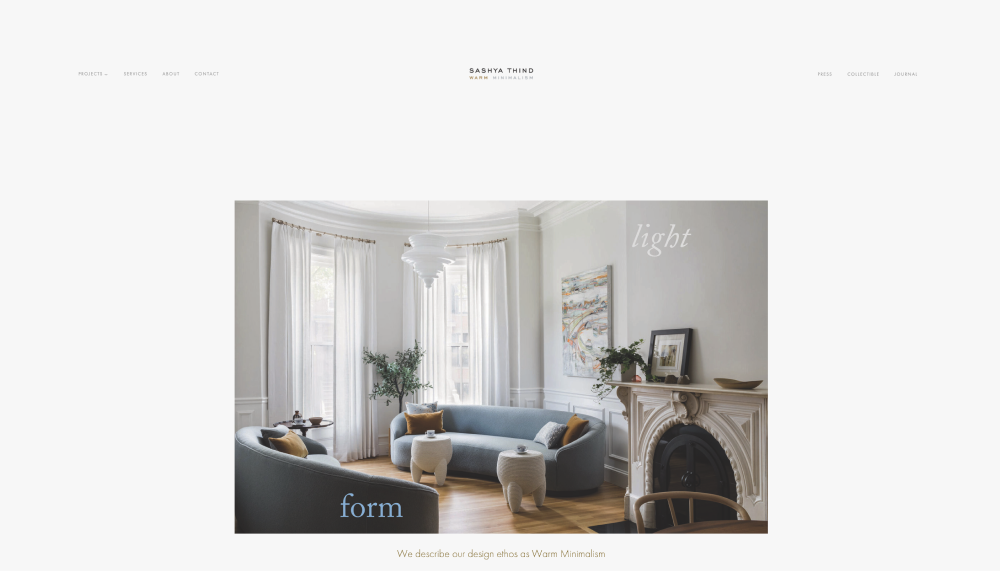

Characterized by 'warm minimalism', this site effectively showcases the designer's own style. Projects are organized and easy to navigate, and there's an extensive Press page showing all the publications where the company has been featured.
Amhad Freeman Interiors


Presents a minimal yet gorgeous layout with easy navigation. The homepage features an elegant video that shows the designer in the spaces he's created.
Havenly
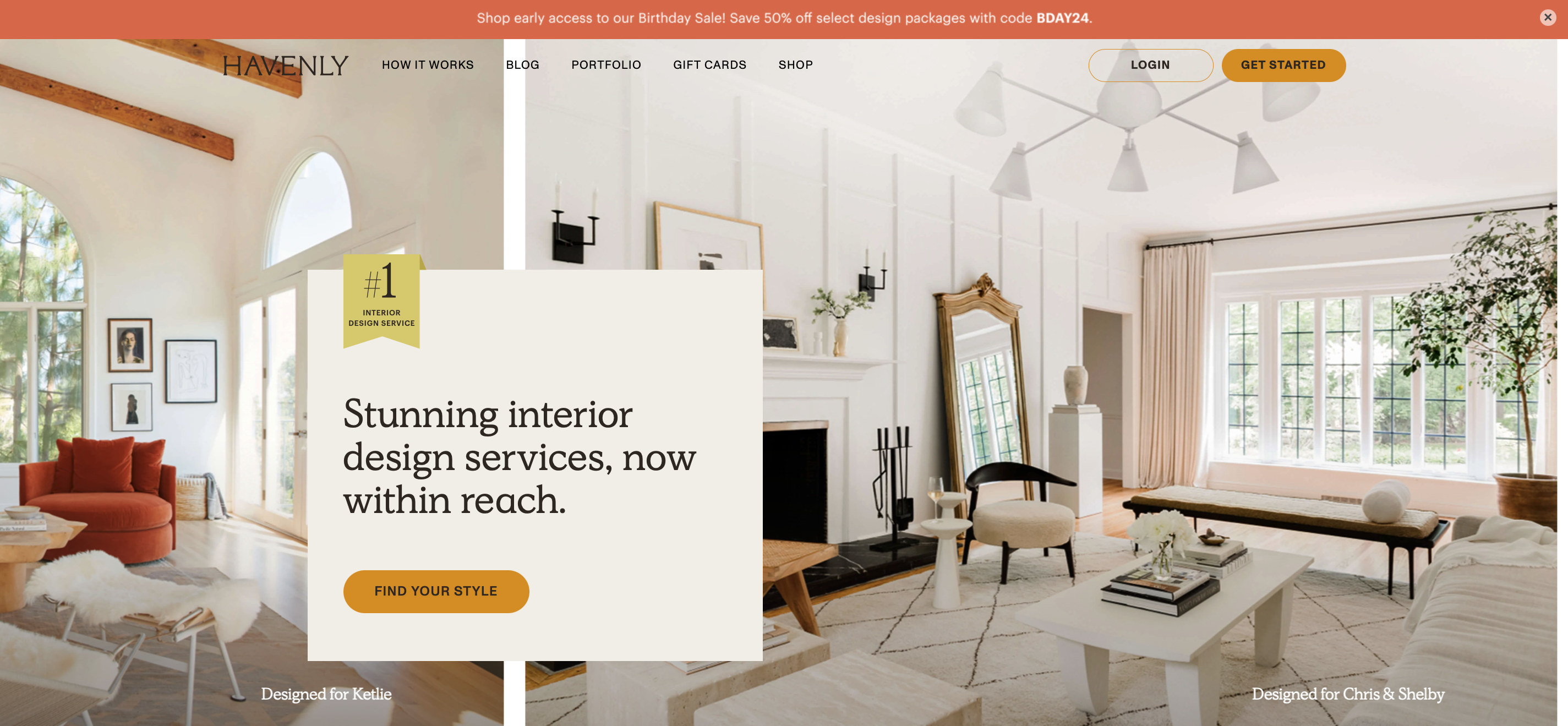

This website sets itself apart from others in the interior design space by showcasing its process through engaging illustrations and offering a style quiz. It features bright colors, stylish fonts, and a touch of femininity, creating a welcoming and unique vibe. Plus, it boosts its approachability by sharing glowing reviews from happy clients and maintaining an active presence on popular social media platforms.
Studio Shamshiri


"When in doubt, but you want to stand out, turn it sideways." -the designer of this site, probably. Shamshiri sets itself apart with a unique layout, fun hover effects, and a menu that isn't more than a little circle in the top right corner (a bold move, but we respect it).
Crafted Interiors


A sleek design with immersive, eye-grabbing sections, including a sideways scroll to showcase the portfolio section on the homepage. The whole website has an effortless, modern feel.
Decorilla




This site's vibe is classy yet practical, making it more accessible for a wider audience who value convenience and have a smaller budget. Decorilla makes great use of video, social proof, and its affiliation with Martha Stewart.
Common Features and User Experience Highlights
- High-Quality Visual Content: All these websites prioritize visually appealing and high-quality imagery to showcase their work.
- User-Friendly and Unique Design: These sites feature user-friendly navigation and unique design elements, such as bold header fonts, contrasting softer fonts, clear CTAs, and vertical menus.
- Engaging Content: They offer engaging content, including blogs, design tips, and detailed project showcases.
- Interactivity and Navigation: Many sites use interactive elements like hover effects, which help in deciphering clickable elements, and menus that are easy to navigate.
- Social Proof: Many of these websites include a Press page and feature testimonials from happy clients, reinforcing their credibility.
These top interior design websites excel in creating engaging user experiences through their unique design elements, user-friendly interfaces, and high-quality content, making them standout examples in the field of interior design.
Case Study: Our Journey with Simour Design


Initial Challenges Faced by Simour Design
When Simour Design, previously known as LA Healthcare Design, partnered with us, they were on the brink of a significant transformation. The goal was clear but challenging: rebrand the business into a luxurious interior design firm, specifically catering to top-tier medical offices nationwide.
Our Strategy: Crafting a New Identity
- A Thoughtful Rebranding: Understanding the importance of cultural and symbolic representation in branding, we worked closely with Mitra Silva, the visionary behind Simour Design. Our focus was to integrate the concept of healing – a vital aspect of their target sector – into their brand. Mitra chose 'Simour', a mythical symbol in Persian culture representing medicine and pharmacy, as the new brand name. This was more than a name change; it was about creating an identity that spoke directly to their audience.
- Website Transformation: Our team dove deep into redesigning their website. We knew that to truly capture the essence of Simour Design, we needed to showcase the transformation they bring into spaces. This was vividly brought to life through before-and-after photos and a rich portfolio gallery on their website, painting a picture of the impact their design has on medical spaces.
- Building a Visual Story: Every element on the new website was carefully chosen to reflect luxury and healing. From the elegant rendition of the simour bird in their logo to the choice of a luxurious serif font, each aspect was a piece of the story we were telling.
- Interactive Elements for Engagement: To make the website not just informative but also engaging, we incorporated custom animations and videos. This wasn't just about aesthetics; it was about narrating the Simour Design Methodology in a way that captivated and educated visitors.
- A Dynamic and Evocative Experience: We wanted every visitor to feel the transformational power of Simour Design as they navigated the site. The use of dynamic content, interactive features, and multimedia elements was crucial in achieving this.
Results: A Triumph in Rebranding
The outcome was a resounding success. Simour Design's new website became a beacon of their expertise in luxury interior design for healthcare spaces. It's not just an online business card – it's a story, an experience, and a promise of transformation, all rolled into one. The website attracts the exact clientele Simour Design is aiming for, marking a significant milestone in their journey.
Impact: Realizing Vision into Reality
This project with Simour Design was more than a client engagement for us; it was a partnership in true transformation. It exemplified our commitment to not just meet but exceed our clients' expectations. Through this project, we demonstrated that with the right strategy, understanding, and execution, a website can be the most powerful tool in a brand's arsenal.
As we reflect on our journey with Simour Design, we are reminded of the impact thoughtful branding and a well-crafted website can have. It's a testament to our dedication to bringing our clients' visions to life and our passion for creating digital experiences that resonate, engage, and inspire.
Read more about how we designed for Simour here.
Why Your Interior Design Website Matters
The Big Picture of a Great Interior Design Website
So, let's bring it all back home. Your interior design website isn't just a bunch of pretty pictures online; it's the digital face of your brand. It's where first impressions are made, ideas are sparked, and where potential clients decide if they want to work with you. It should be your online portfolio, your 24/7 showroom, and your best salesperson, all rolled into one.
A Little Nudge to Get You Started
Remember, everyone starts somewhere, and your website is a journey. It's about telling your story, showing off your best work, and really connecting with those who visit your site. Whether you're jazzing up a living room or transforming a commercial space, your website should reflect the quality and style of your work.
Let's Make Some Magic Happen
Ready to give your website the upgrade it deserves? That's where we, Just Digital, come in. We're all about creating websites that not only look amazing but also do the hard work of drawing in your ideal clients.
Here's Our Invite: Drop us a line! We're here to chat about how we can make your interior design website shine. Whether it’s a full makeover or just a few tweaks, we’ve got your back.
Our Special Offer: And hey, because we love seeing great design as much as you do, we're offering a free consultation and website audit. Let’s take a peek at what you’ve got and brainstorm some ideas to make it even better.
Ready to turn your website into a showstopper? Contact Just Digital today and let's create a space on the web that’s as stunning and unique as your designs.
From Followers to Brand Advocates: Transform Your Audience with Ambassador Marketing
Did you know that 92% of consumers trust recommendations from individuals—even if they don't know them—over brands? This striking statistic underscores the seismic shift in digital marketing towards authenticity and trust. Enter ambassador marketing, a strategy that transforms passive followers into active brand advocates, leveraging real stories from real people. This approach isn't just about cutting through the digital noise; it's about creating a symphony of genuine voices that resonate more deeply with audiences than any traditional ad ever could.
"Marketing used to be about making a myth and telling it. Now it's about telling a truth and sharing it," Marc Mathieu once said, highlighting the shift from fabrication to authenticity. Following this, Ty Heath from LinkedIn adds another layer, noting, "People can break through the noise... People trust people. Influence is about relationships." These insights set the stage for our exploration of ambassador marketing, emphasizing the power of genuine relationships and authentic storytelling in cutting through the digital din.
In this guide, you'll discover the ins and outs of ambassador marketing, from harnessing the power of micro-influencers and leveraging cutting-edge AI, to fostering diversity and inclusion within your ambassador ranks. Prepare to learn how this strategy can amplify your brand's reach, enhance authenticity, and ultimately, convert followers into loyal advocates.
The Essence of Ambassador Marketing: Building Trust, Authenticity, and Community
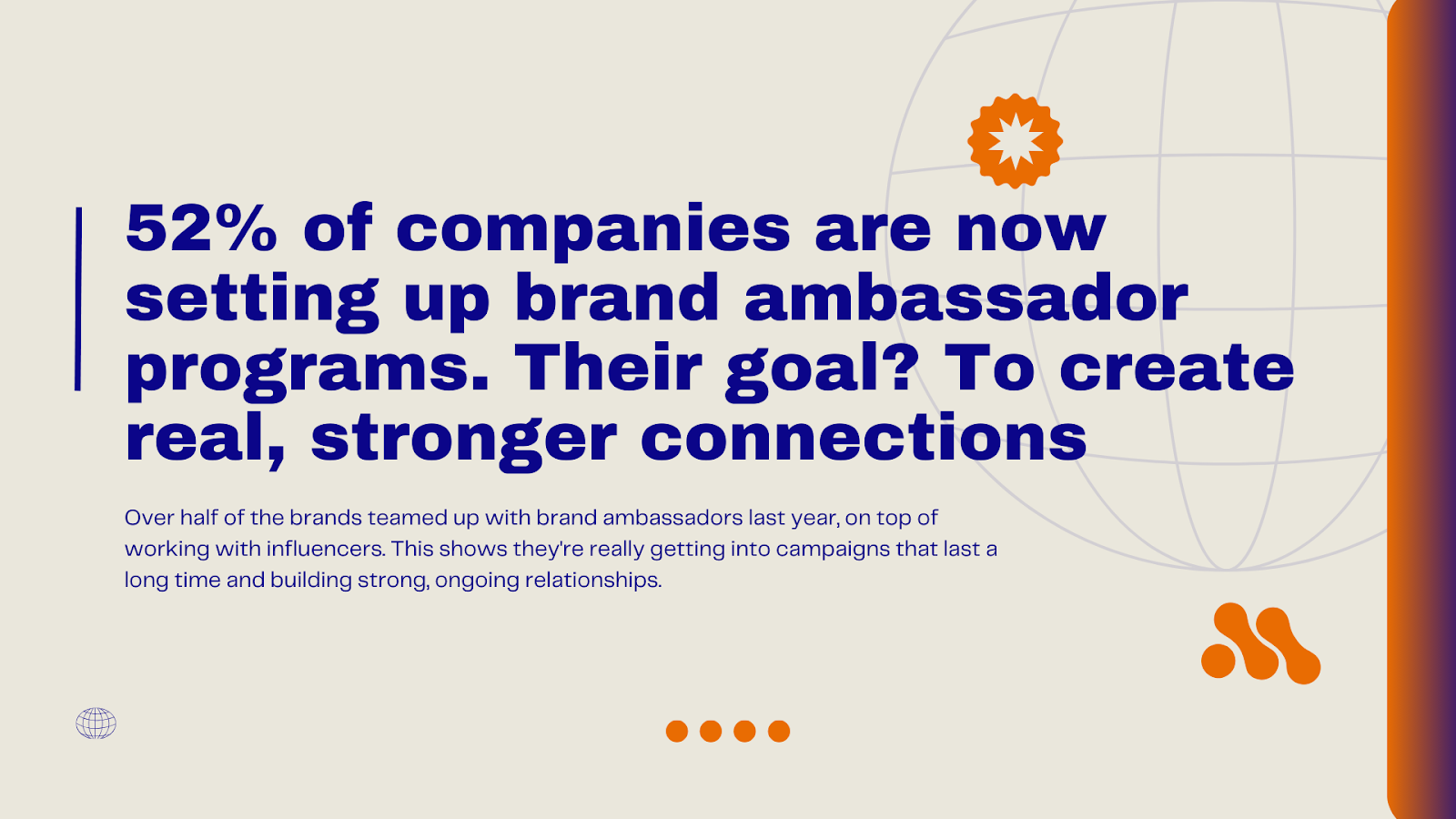

Ambassador marketing is all about trust, and it starts with real, honest communication. When ambassadors share their genuine love for a product, it creates a special connection with the audience. This makes the brand feel more relatable and trustworthy. Feeling emotionally connected to a brand is key because it drives people to support brands that seem to get them and speak their language.
Then there's the power of social proof. It's impressive when you see people you respect or find relatable backing a brand. This kind of endorsement boosts the brand's value and credibility in your eyes. It's about real people showing real love for something, which makes others more likely to trust and choose the brand themselves.
Creating a community is another big win for ambassador marketing. Customers turn into more than just shoppers – they become part of the brand's story. This community feeling is important because the brand becomes a shared experience, a place where people feel they belong.
In short, ambassador marketing brings trust, social proof, and a sense of community together to make brands more engaging and beloved. It turns customers into active members of the brand's world, building a deeper sense of connection and loyalty that goes beyond just buying products.
Aligning with Business Goals
Ambassador marketing doesn't just elevate your brand's social media presence; it affects many areas of your company and can help with a variety of business goals. Whether you're aiming to increase brand awareness, boost sales, or build a loyal community, ambassador marketing offers a pathway to these objectives, grounded in trust and genuine relationships. For instance, a brand looking to break into a new market can leverage ambassadors from that demographic to introduce their products with authenticity and personal endorsements. Similarly, for businesses focusing on long-term growth, building a network of brand ambassadors can ensure a steady stream of genuine, engaging content that supports both immediate sales goals and sustained brand loyalty.
In essence, ambassador marketing is about harnessing the power of genuine advocacy, transforming satisfied customers into vocal supporters. It's a strategy that not only enhances your marketing efforts, but also weaves your brand more tightly into the fabric of your customers' lives, creating a community of ambassadors who are invested in your success.
For more on brand ambassador marketing, check out our blog here.
Strategy Development for Ambassador Marketing
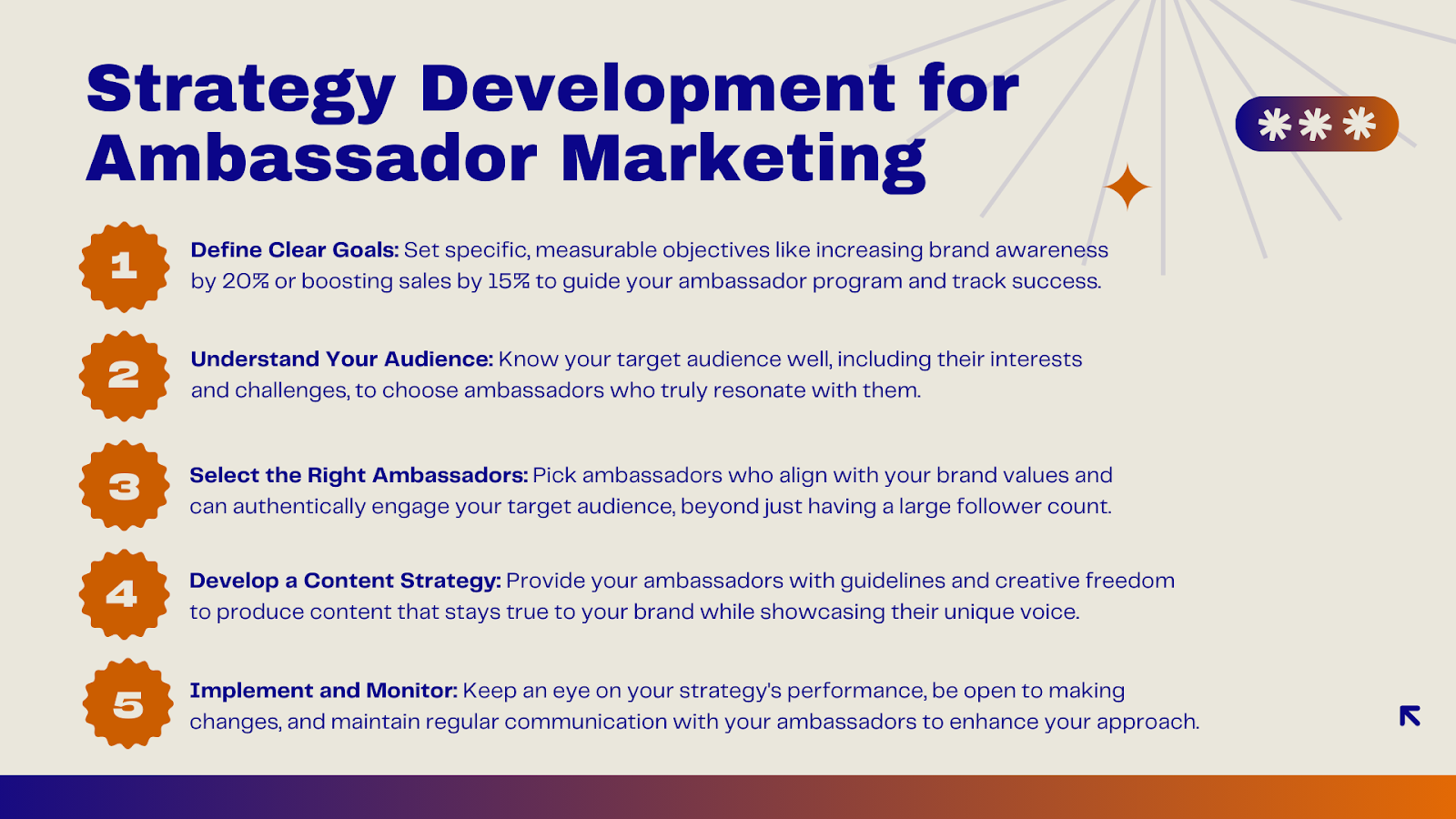

Creating a successful ambassador marketing strategy is a journey that combines strategic planning with effective execution. Here's a streamlined guide to developing and implementing an ambassador marketing program that resonates with your audience and achieves your business goals.
Step 1: Define Clear, Measurable Goals
Start by setting specific objectives for your ambassador marketing program. Whether it's increasing brand awareness by 20% or boosting sales by 15%, having clear, measurable goals helps tailor your strategy and track progress. For example, aiming to grow Instagram engagement by 30% within six months can guide the focus of your ambassador activities.
Step 2: Understand Your Audience
Deeply knowing your target audience—beyond just demographics—is crucial. Identify their interests, challenges, and motivations to select ambassadors who can genuinely connect and influence them. For instance, a beauty brand targeting eco-conscious consumers would benefit from ambassadors passionate about sustainability.
Step 3: Select the Right Ambassadors
Choose ambassadors based not just on their follower count but on their alignment with your brand's values, their relevance to your target audience, and the genuine engagement they generate. Authenticity and a real connection with their audience are essential for creating relatable and engaging content.
Step 4: Develop a Content Strategy
Empower your ambassadors with a content strategy that allows for creativity while ensuring brand consistency. Providing content guidelines, themes, or calendars helps ambassadors create genuine experiences that align with your brand's marketing goals. Encourage them to share their personal stories, adding a unique and authentic voice to your brand narrative.
Step 5: Implement and Monitor Your Strategy
With your strategy in motion, closely monitor its performance against your objectives. Be ready to adjust based on feedback and results. Regular check-ins with your ambassadors can offer insights and help refine your approach for better outcomes.
Execution Tips for Smooth Campaigns
- Start with a Clear Brief: Make sure your ambassadors fully understand the campaign's goals, key messages, and calls to action.
- Establish a Communication Channel: A dedicated line for communication keeps everyone on the same page and facilitates efficient campaign management.
- Monitor Progress: Regularly check in with your ambassadors to gather feedback and adjust the campaign as needed.
- Encourage Authenticity: Authentic content resonates more deeply with audiences. Encourage ambassadors to share their true experiences.
- Co-create Content: Collaborating on content creation can lead to innovative ideas and more organic engagement.
- Leverage User-Generated Content (UGC): UGC is invaluable for ambassador marketing. Repurpose this content across your channels to show you value their contributions.
- Coordinate Across Channels: Ensure your efforts are synchronized across all platforms, tailoring content to each audience and format.
- Maintain Brand Alignment: Provide clear content guidelines to ensure ambassador-generated content is consistent with your brand's messaging.
By following these steps and maintaining a focus on clear communication, authenticity, and strategic alignment, you can build a more engaged and loyal community around your brand, driving both awareness and sales. Remember, the key to a successful ambassador marketing campaign lies in the seamless integration of strategy development and practical execution.
For more tips on brand ambassador marketing, check out our blog here.
Tools and Platforms for Managing and Scaling Your Ambassador Program
Navigating the world of ambassador marketing without the right tools is like trying to text with a flip phone—possible, but why make life harder? Thankfully, the digital age offers a treasure trove of platforms designed to turn the chaos of managing an ambassador program into a walk in the park (minus the actual walking). Let’s dive into the digital toolbox that’ll keep your ambassador program running smoother than a well-oiled meme machine.
The Digital Toolbox for Ambassador Marketing
Recruitment and Management Platforms: Think of platforms like Aspire, BrandChamp, and Ambassador as your digital matchmakers. They specialize in setting you up with brand ambassadors who don’t just like your brand but are ready to shout their love from the virtual rooftops.
Key Features to Swipe Right On:
- Tracking and Analytics: If you’re not measuring it, did it even happen? Look for platforms that let you stalk—I mean, track—the success of your ambassador engagements with the precision of a cat hunting a laser pointer.
- Communication Tools: Keeping in touch with your ambassadors shouldn’t be like sending messages in a bottle. Opt for platforms with built-in messaging, email integration, or even telepathic signals (okay, maybe not that last one) to keep the conversation flowing.
- Reward Systems: Everyone loves a pat on the back, especially if it comes with perks. Platforms that offer creative reward systems let you say “thanks” in a way that keeps your ambassadors more hooked than a season finale cliffhanger.
Monitoring and Measurement in Ambassador Marketing: The Not-So-Secret Sauce


Let's talk about the detective work behind ambassador marketing—monitoring and measurement. It's not just about launching campaigns and hoping for the best. It's about tracking their success, understanding what's working (and what's not), and making smart adjustments. Think of it as your campaign's report card, but without the anxiety of parent-teacher conferences.
Key Metrics to Keep an Eye On
- Engagement: This is the heartbeat of social media metrics. Likes, comments, shares, and saves tell you if your content is more captivating than the latest viral cat video.
- Reach: How far is your message traveling? Are you reaching a cozy small-town audience, or are you broadcasting to the entire digital metropolis?
- Conversion: This metric answers the age-old question: Are all those likes and shares turning into cold, hard cash (or at least warm, soft leads)?
- ROI: The big boss of metrics. ROI (Return on Investment) tells you if the treasure chest at the end of your ambassador marketing rainbow is full of gold or just glittery paper.
Tools and Techniques for Measuring Success
Now, unless you have a superpower that lets you manually track every like and share, you'll need some tools to help you out. Platforms like Google Analytics, Hootsuite, and BuzzSumo can be your digital sidekicks, offering insights into engagement, reach, conversion rates, and more. They're like having a crystal ball, but with data instead of vague predictions.
Adjusting and Optimizing Based on Performance Data
Here's where the magic happens. Once you've gathered all your data, it's time to play detective. Which campaigns had people talking more than the latest season finale? Which ones fizzled out faster than a soda left open overnight? Use this information to tweak your strategy. Maybe it's time to shift focus, try new content formats, or even scout for new ambassadors.
Remember, the goal of monitoring and measurement in ambassador marketing isn't just to pat yourself on the back for a job well done (though that's always nice). It's about continuously refining your strategy to ensure your brand's message is not just heard but also felt, remembered, and acted upon. So, keep your eyes on the data, and let it guide your way to ambassador marketing stardom—no crystal ball required.
Case Studies: Real Ambassador Marketing Triumphs
Lululemon’s Ambassador Program: Stretching Beyond Yoga Mats


The Strategy: Lululemon, the athletic apparel company, has long leveraged a robust ambassador marketing program. They partner with yoga instructors, athletes, and fitness professionals who embody the brand's lifestyle. These ambassadors hold classes and events, create content, and share their Lululemon experiences on social media.
The Results: This strategy has helped Lululemon cultivate a strong community presence, increase brand loyalty, and drive sales. The authentic connections between ambassadors and their followers have reinforced Lululemon's position as a lifestyle brand, not just an apparel retailer.
Lessons Learned: Lululemon's success underscores the importance of choosing ambassadors who genuinely live and breathe your brand's values. This authenticity resonates with audiences, fostering a deeper brand connection.
GoPro’s User-Generated Content: Capturing Authentic Moments


The Strategy: GoPro’s approach to ambassador marketing focuses heavily on user-generated content. They encourage customers to share their adventures captured with GoPro cameras, effectively turning many of their users into brand ambassadors. The most compelling content is featured on GoPro’s social media channels and in their marketing materials.
The Results: This strategy has not only generated a wealth of authentic content but also significantly increased engagement across social media platforms. It has reinforced GoPro's image as a brand that celebrates adventure and creativity, driving product sales and brand loyalty.
Lessons Learned: GoPro demonstrates the power of leveraging user-generated content as a form of ambassador marketing. Encouraging your customers to share their experiences can lead to authentic content that resonates with potential buyers.
Daniel Wellington’s Influencer Collaboration: Timing Is Everything


The Strategy: Watch brand Daniel Wellington utilized a mix of micro-influencers and well-known personalities to showcase their products. By providing them with free products and discount codes for their followers, the brand managed to create a buzz around their sleek, minimalist watches.
The Results: This strategy significantly increased Daniel Wellington’s online visibility and sales. The brand successfully tapped into the audiences of various influencers, expanding their reach and establishing a strong presence on social media.
Lessons Learned: Daniel Wellington’s campaign highlights the effectiveness of a broad influencer strategy that includes both micro-influencers and larger names. It shows that a well-coordinated effort can lead to widespread brand recognition and sales growth.
These real-world examples from Lululemon, GoPro, and Daniel Wellington showcase the diverse ways in which ambassador marketing can be leveraged to build brand loyalty, engage with audiences, and drive sales. Each case study demonstrates the importance of authenticity, community engagement, and strategic partnerships in creating successful ambassador marketing campaigns.
Challenges and Solutions in Ambassador Marketing
Diving into ambassador marketing is exciting, but it's not without its hurdles. Let's break down some of the common challenges you might encounter and provide straightforward solutions to keep your program running smoothly.
Challenge 1: Ambassador Retention
The Dilemma: Keeping ambassadors engaged over time can be tricky. Enthusiasm at the start doesn't always guarantee long-term participation.
The Fix: Regular engagement is key. Keep ambassadors motivated with exclusive updates, recognition for their efforts, and fresh challenges or incentives. A simple "thank you" or spotlighting their work can also go a long way in making them feel valued and connected to your brand.
Challenge 2: Content Quality Control
The Dilemma: Ensuring the content from ambassadors aligns with your brand's quality standards and messaging can sometimes be a balancing act.
The Fix: Provide clear content guidelines and examples of what good looks like. Offer feedback and constructive criticism when necessary. Consider creating a resource hub where ambassadors can access brand assets, FAQs, and tips for creating engaging content that aligns with your brand identity.
Challenge 3: Measuring Impact
The Dilemma: Determining the effectiveness of your ambassador marketing efforts can sometimes feel like shooting in the dark without the right tools and metrics in place.
The Fix: Utilize analytics tools to track engagement, reach, conversion rates, and ROI. Set specific KPIs for your ambassador program and regularly review these metrics to understand what's working and where there's room for improvement. Adjust your strategy based on this data to optimize performance.
Challenge 4: Protecting Brand Reputation
The Dilemma: With multiple ambassadors spreading the word about your brand, there's a risk that messages might not always be consistent, or that an ambassador's actions could potentially harm your brand's reputation.
The Fix: Regular training and clear communication of your brand's values and expectations are crucial. Implement a vetting process for selecting ambassadors who truly align with your brand. Establish a monitoring system to quickly address any content or behavior that could negatively impact your brand reputation.
In ambassador marketing, challenges like retaining ambassadors, ensuring content quality, measuring impact, and protecting your brand's reputation are par for the course. However, with proactive engagement, clear guidelines, diligent monitoring, and data-driven strategy adjustments, these challenges can be effectively managed. This approach ensures your ambassador marketing efforts remain impactful and aligned with your brand's goals.
Where Ambassador Marketing Is Headed
As we peer into the future of ambassador marketing, we don't need a crystal ball or tea leaves to see where the winds are blowing. The landscape is evolving, with new technologies and a growing emphasis on authenticity shaping the horizon. Let's unpack some of the emerging trends and make a few educated guesses – strictly data-driven, of course – on where things are headed.
Micro-Influencers and AI
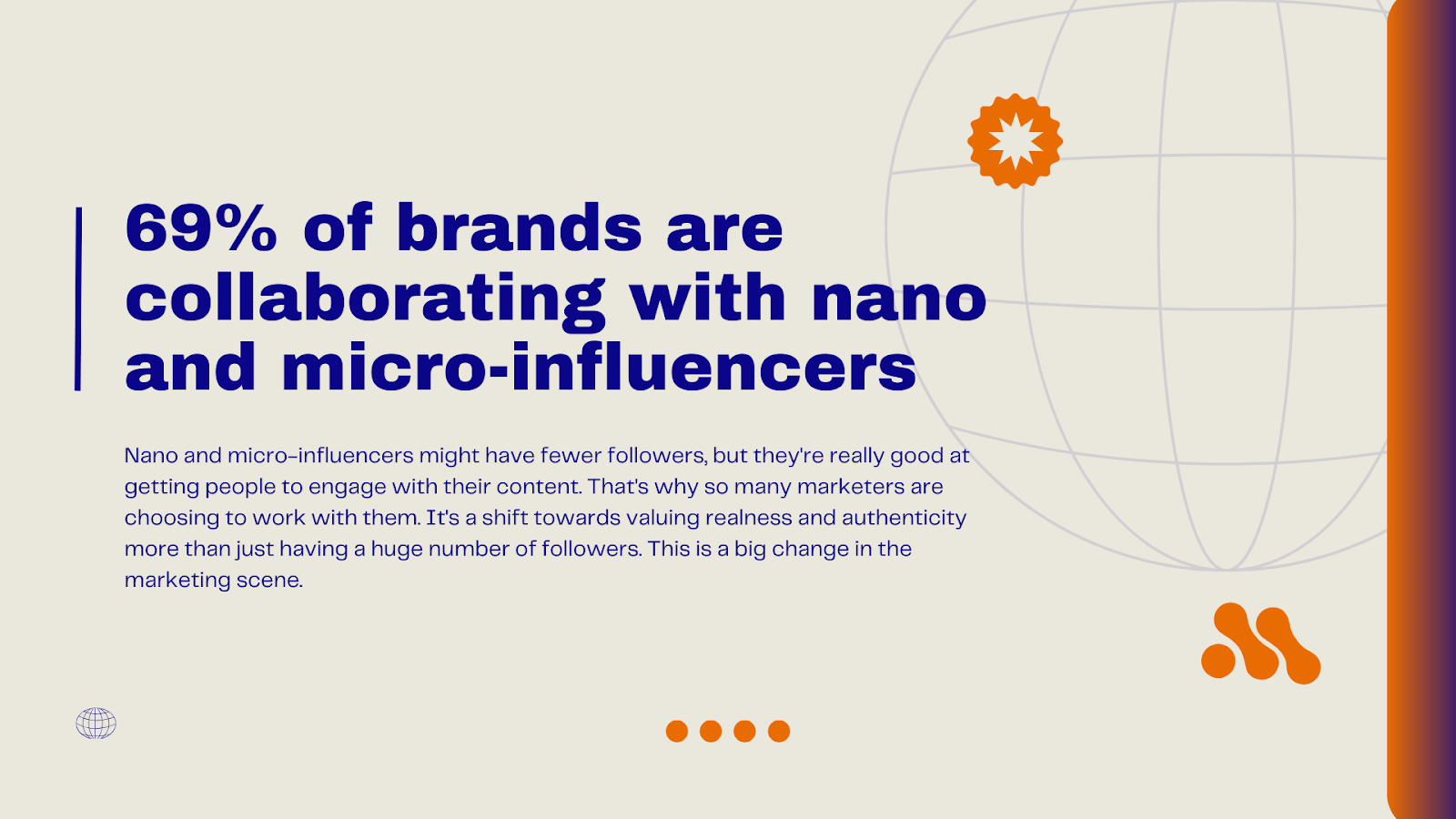

Let's chat about micro-influencers and AI – because, honestly, they're changing the ambassador marketing game in ways we didn't see coming. Micro-influencers are like the cool, niche friends you didn’t know you needed. They might not have the follower count of a celebrity, but what they lack in numbers, they make up for in engagement and trust. It's their genuine connection with their audience that makes them gold for brands aiming to reach specific groups with laser precision.
Then there's AI, the brainy behind-the-scenes player making these matches happen. Imagine a tool so smart it can sift through the digital noise to find the perfect ambassador for your brand. It's like having a matchmaking service that knows exactly what you're looking for in a brand partner, ensuring that when you swipe right, it's a match made in marketing heaven. This isn't just about finding someone with a shared interest in eco-friendly products or gourmet cooking; it's about aligning on values, vibe, and vision.
Embracing Diversity and Inclusion – More Than Just a Buzzword


Moving on to diversity and inclusion – because let's face it, they're everything right now. It's not just about ticking boxes or looking good in your brand brochure. It's about reflecting the real world, where people come from all walks of life. By weaving a rich tapestry of voices into your ambassador program, you're not just reaching more people; you're resonating with them. It's like throwing a party where everyone's invited, and everyone sees a bit of themselves when they walk in. That sense of belonging? It's priceless.
This commitment to diversity goes beyond just who you're showcasing; it's about the stories you're telling. It's a chance to celebrate the unique, the underrepresented, and the overlooked. And let's be real, in a world that's more connected than ever, being a brand that champions inclusivity isn't just nice – it's necessary. It's how you turn heads, win hearts, and build a community that's loyal not just to what you sell, but to what you stand for.
Authenticity and Transparency: The Non-Negotiables
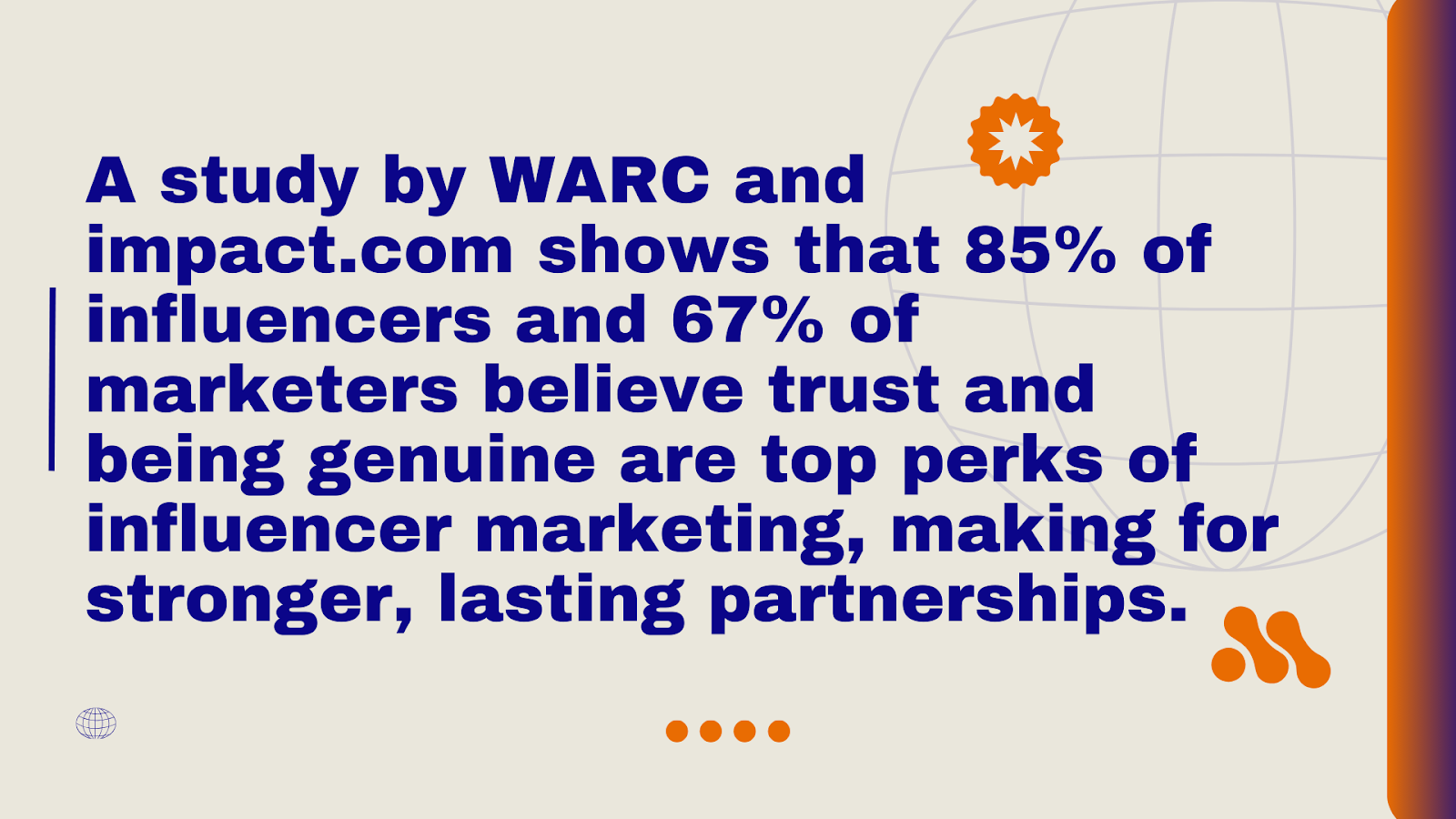

If there's one trend that's here to stay, it's the demand for authenticity and transparency in ambassador campaigns. Audiences have developed a sixth sense for sniffing out anything that feels insincere or staged. The future of ambassador marketing leans heavily into genuine, relatable content that resonates on a personal level. Brands and ambassadors alike will need to keep it real – like, really real – if they want to maintain trust and loyalty among their audiences.
Predictions for the Evolution of Ambassador Marketing
Looking ahead, we can expect ambassador marketing to become even more integrated into the overall marketing strategy of brands. It won't just be a side dish; it'll be a main course. We'll see a shift towards long-term partnerships with ambassadors, where they're treated more like part of the team than external contractors. This deep integration will foster stronger brand alignment and more impactful storytelling.
Additionally, as the digital landscape becomes more crowded, niche platforms and communities will gain importance. Brands will look beyond the usual suspects (Instagram, Facebook, Twitter) and dive into specialized platforms where they can connect with highly engaged audiences.
How Brands Can Prepare for the Future
To stay ahead of the curve, brands should start by embracing the technologies that make ambassador marketing more efficient and effective. Investing in tools that leverage AI for ambassador identification and management is a smart move. At the same time, fostering a culture of authenticity within your marketing team and among your ambassadors will ensure your campaigns resonate with audiences.
Finally, keep an eye on emerging platforms and communities. Being an early adopter in a niche space can give your brand a significant advantage and help you connect with audiences in a more meaningful way.
In short, the future of ambassador marketing is bright, smart, and genuine. By staying adaptable, embracing new technologies, and doubling down on authenticity, brands can not only keep up but lead the charge into the future of digital marketing.
Wrapping Up the Ambassador Marketing Saga
As we draw the curtain on our deep dive into ambassador marketing, let's crystallize the key takeaways and chart a course for action. Ambassador marketing stands as a beacon of authenticity in a sea of digital marketing tactics, offering unparalleled opportunities to build genuine connections with your audience. By selecting the right ambassadors, crafting compelling content together, and leveraging the latest in AI and analytics, you can transform your digital marketing strategy from a monologue into a dynamic, engaging dialogue.
The benefits are clear: enhanced brand perception, deeper customer loyalty, and a vibrant community of advocates, all powered by the authenticity and trust that only real, relatable voices can provide. The steps to implement an effective ambassador marketing strategy are within reach, from identifying your brand champions to measuring the impact of their advocacy.
Let's Make Magic Happen
Feeling inspired to kickstart or revamp your ambassador marketing efforts? Fantastic – that's the spirit we love to see. If you're ready to transform your followers into a loyal army of brand advocates but aren't quite sure where to start, fear not. Just Digital is here to help you navigate these waters (last nautical reference, promise). With our expertise and your passion, there's no limit to the heights your brand can reach.
So, what are you waiting for? It's time to enhance your ambassador marketing efforts and watch your brand's story unfold through the voices of those who love it most. Reach out to Just Digital today, and let's create some marketing magic together. Your brand advocates are out there waiting; let's turn them into your loudest cheerleaders.
10 Law Firm SEO Tricks That Will Skyrocket Your Traffic
Welcome to the digital battleground of the legal world, where standing out is not just about legal prowess but how you harness the power of law firm SEO. In this arena, the rule of the game is clear: Adapt to thrive.
The legal field today is full of relentless competition. With countless firms vying for attention, merely having an online presence isn't enough. It's about cutting through the digital noise, reaching out through the screens, and grabbing your potential client’s attention at that critical moment of need. This is where law firms SEO emerges not just as a strategy, but as your digital lifeline.
Think about the digital journey of your potential clients. They turn to search engines with their legal queries, looking to solve an urgent problem. What if your firm's name could be the first they see? This is the transformative impact of a well-executed SEO strategy.
That said, keep in mind that the goal of law firm SEO is more than just topping search engine results. It’s about forging connections, answering the unasked questions, and building a bridge of trust with those seeking legal guidance. Let’s dive into the world of law firm SEO, where your firm's digital presence is as crucial as your expertise in the courtroom.
The Basics of Law Firm SEO
Understanding Law Firm SEO
Law firm SEO, or Search Engine Optimization for legal practices, is a strategic process designed to increase the visibility of law firms in search engine results. This specialized approach focuses on optimizing a law firm's online presence to attract more clients. By leveraging techniques like keyword optimization and content creation, law firm SEO services aim to position your firm prominently in search results when potential clients search for legal assistance.
SEO for law firms goes beyond the typical marketing strategies. It’s a specialized approach, understanding that the stakes are higher and the audience is more specific. Whether it's someone seeking legal advice or representation, law firm SEO ensures your name comes up right when they need it. It’s about being the first firm they see, and often, the first call they make.
The Importance of SEO for Lawyers
In the digital era, where the majority of people seek legal advice online, the importance of SEO for lawyers cannot be overstated. We know that a significant percentage of potential clients begin their search for legal services online. This trend makes SEO services for law firms crucial for reaching and engaging this audience. Effective SEO strategies can significantly increase the likelihood of your firm being chosen over competitors, improving your firm's marketability and client base.
Key Components of Effective Law Firm SEO
Primary Ranking Factors in Law Firm SEO
The effectiveness of a law firm's SEO strategy hinges on several key components:
- Content: Creating high-quality, relevant content is at the heart of law firm SEO. This includes everything from detailed practice area descriptions to informative blog posts, which are integral to lawyer SEO marketing. To learn more about creating quality content, you can read Semrush’s blog here.
- Link-Building: Establishing a network of backlinks from reputable sources is crucial. This enhances the authority and credibility of your law firm's website, a tactic employed by both lawyer SEO agencies and attorney SEO agencies.
- Technical SEO: Ensuring your website is technically sound is a cornerstone of law firm SEO. This involves improving site speed, mobile responsiveness, and website architecture.
- User Experience (UX): A user-friendly website design is essential for keeping potential clients engaged and improving search rankings.
On-Page, Off-Page, and Technical SEO Tactics
- On-Page SEO: This involves optimizing individual web pages to rank higher in search engines. Tactics include using relevant keywords in your content and meta tags.
- Off-Page SEO: This focuses on external factors that impact your website's ranking, like building backlinks from other reputable sites. Law firm SEO agencies and SEO companies for attorneys often concentrate on this aspect to boost a site's authority.
- Technical SEO: This involves optimizing the backend of your website, like improving page load speed and ensuring your site is crawlable by search engine bots. Law firm SEO consultants and law firm SEO companies often specialize in these technical details to enhance overall site performance.
Incorporating these components into your law firm’s SEO strategy, whether through an in-house team or by partnering with a law firm SEO company coalition or a lawyers SEO agency, can significantly improve your online visibility, drawing more clients to your firm.
Creating Compelling Content
The Importance of High-Quality Content for Law Firm Websites
In the competitive landscape of law firm SEO, content is a key player. For law firms venturing into the digital realm, creating high-quality, relevant content is not just about improving search engine rankings, it's about connecting with your audience — the potential clients seeking legal guidance. This content, whether it’s detailed articles on specific legal issues or informative blog posts, serves as a foundation for establishing your firm’s expertise and authority in your practice area.
Tips for Optimizing Content with Keywords
To effectively optimize your content:
- Focus on Relevance and Quality: Concentrate on topics that are pertinent to your practice areas and client concerns. This ensures that your content is not only informative but also engaging.
- Understand Your Audience’s Needs: Tailor your content to address the specific queries and legal issues your potential clients are searching for. This approach helps in making your content more discoverable and relevant.
- Use Layman’s Terms: Avoid excessive legal jargon. Opt for clear, accessible language that your audience can easily understand.
Role of EAT in Law Firm SEO
Expertise, Authority, and Trustworthiness (EAT) are crucial for law firm websites. Content that demonstrates your legal expertise, showcases your successes, and provides trustworthy information will resonate more with both your audience and search engines. This is especially important given that legal advice directly impacts users’ lives and decisions. Content that reflects a high level of EAT not only helps in SEO but also builds your firm’s reputation online.
Ahrefs does a great job at explaining this concept in detail here.
Build Quality Backlinks
Understanding Backlinks and Their Impact on Law Firm SEO
Backlinks, which are links from other websites to your own, are a vital component of SEO for law firms. They act as signals to search engines that others vouch for your content. For law firms, acquiring backlinks from reputable legal sites, educational institutions, and news outlets can significantly enhance your site's authority and improve your search rankings.
Strategies for Acquiring Quality Backlinks
- Engage with Legal Communities: Participate in online legal forums or write guest posts for legal blogs. Such engagement can lead to backlinks from these platforms to your site.
- Leverage Local Partnerships: Collaborate with local businesses and community organizations. Request that whenever your name is mentioned, they link to your website as well.
- Create Shareable Resources: Develop useful resources like legal guides or FAQs. Such content is more likely to be shared and linked to by other websites, including legal blogs and news outlets.
Implementing these strategies can greatly improve your law firm’s online visibility, drawing more traffic to your site and thereby, increasing potential client engagement.
Technical SEO for Law Firms
The Importance of Website Technical Aspects
For law firms looking to enhance their online presence, understanding the importance of technical SEO is crucial. It involves optimizing the technical elements of your website to improve its visibility in search results. Key aspects include page speed, website structure, and mobile-friendliness. A law firm’s website should load quickly, be easy to navigate, and be accessible on a variety of devices, including smartphones and tablets. This is essential not only for user experience but also for ranking well in search engines. You can take a look at our top 25 law firm websites here.
Core Web Vitals and Their Significance in SEO Performance
Core Web Vitals are a set of specific factors that Google considers important in a webpage's overall user experience. These include Largest Contentful Paint (LCP), which measures loading performance; First Input Delay (FID), which measures interactivity; and Cumulative Layout Shift (CLS), which measures visual stability. For law firms, ensuring that their websites meet these Core Web Vitals benchmarks is a critical part of their SEO strategy. This is because Google uses these metrics as ranking factors, meaning they can significantly impact where your firm’s website appears in search results.
User Experience (UX) Optimization
The Role of UX in SEO and Website Ranking
User Experience (UX) is a pivotal component in the success of any law firm's website. A well-designed user experience can greatly enhance a site's usability and accessibility, leading to better engagement with potential clients. Google and other search engines prioritize websites that offer a great user experience, making UX optimization an essential part of SEO for law firms. This includes ensuring that the website is intuitive, information is easy to find, and the site as a whole provides a seamless and satisfying experience for users.
Tips for Improving Navigation, Visual Appeal, and Site Performance
- Streamline Navigation: Ensure your website has a clear, logical navigation structure that allows users to find information quickly and easily. This is particularly important for law firm websites where users are often looking for specific legal services or resources.
- Enhance Visual Appeal: The visual design of your website should be professional and reflective of your law firm’s brand. Use clean layouts, high-quality images, and a color scheme that is easy on the eyes to make your site more inviting.
- Optimize Site Performance: Regularly check your website for any issues that might affect its performance, such as slow loading times, broken links, mobile experience, and outdated content. Use tools like Google’s PageSpeed Insights to identify and rectify these issues.
By focusing on these aspects of UX, law firms can not only improve their website’s ranking in search results but also provide a better online experience for their clients, thereby enhancing their overall online marketing effectiveness.
Local SEO Strategies
Importance of Local SEO for Law Firms
Local SEO is a critical component of a successful digital marketing strategy, especially for law firms. It focuses on optimizing your firm's online presence to appear in local search results, which is particularly important for lawyers and attorneys who serve specific geographical areas. Implementing local SEO helps in attracting potential clients from your area, making it a key factor in driving local traffic and inquiries.
How to Optimize for Local Searches
- Optimize Your Google My Business Listing: Ensure your law firm's Google My Business profile is accurate and comprehensive. This includes verifying your listing, adding detailed information about your services, and regularly updating your operating hours and contact details.
- Local Keywords: Incorporate local keywords, such as 'lawyer seo [Your City]' or 'attorney seo services in [Your Area]', into your website's content and meta tags to improve local search visibility. For more information, read Search Engine Journal’s blog on local SEO here.
- Get Listed in Local Directories: Make sure your law firm is listed in local business directories and legal directories. Consistent listings with accurate NAP (Name, Address, Phone Number) details are essential for boosting local SEO.
Measuring SEO Success
Tools and Techniques for Tracking and Analyzing SEO Performance
- Google Analytics and Google Search Console: Use these tools to track your website’s traffic, understand how users find your site, and identify which pages perform the best.
- SEO Performance Tools: Utilize tools like SEMrush or Ahrefs to gain insights into keyword rankings, backlink profiles, and competitor analysis. These tools are beneficial for law firms looking to track their SEO efforts and gain a competitive edge.
- Conversion Tracking: Set up conversion goals in Google Analytics to understand how your SEO efforts are translating into client inquiries and cases.
Importance of Consistent Evaluation and Adaptation
SEO is not a set-it-and-forget-it strategy. The digital landscape, especially for competitive fields like legal SEO, is constantly evolving. Regularly reviewing your SEO strategy and making necessary adjustments based on performance data is crucial. Stay informed about the latest SEO trends and algorithm updates to keep your law firm’s website ahead of the curve. This ongoing process of evaluation and adaptation is essential for sustaining and improving your law firm's online visibility and client acquisition.
Pros and Cons of DIY vs. Hiring an SEO Expert
DIY SEO:
- Pros: Cost-effective, maintains direct control over strategies, and personal understanding of the firm’s marketing approach.
- Cons: Time-consuming, requires a steep learning curve, and potential for ineffective strategies.
Hiring an SEO Expert:
- Pros: Access to specialized knowledge and skills, saves time, and potentially more effective outcomes.
- Cons: Can be costly, requires finding a trustworthy expert.
Tips for Finding the Right SEO Specialist
- Research: Look for specialists with experience in lawyer SEO and law firm SEO services.
- Reputation and Reviews: Check their track record and client testimonials.
- Understand Your Needs: Clearly define your goals to find a specialist that aligns with your firm’s objectives, whether it’s a law firm SEO consultant or an agency offering SEO services for lawyers.
- Communication and Reporting: Ensure they have clear communication channels and provide regular, understandable reports on SEO performance.
Choosing the right approach depends on your firm's resources, time, and SEO knowledge. Whether opting for DIY or hiring an expert, the focus should always be on improving online visibility and attracting more clients.
How to Choose the Right Law Firm SEO Services
When selecting law firm SEO services, it's essential to assess their expertise and experience specifically in the legal sector. Look for providers who offer a comprehensive range of services, including keyword optimization, content creation, technical SEO, and local SEO strategies, tailored to the unique needs of law firms.
- Specialization in Legal SEO: Choose a service that specializes in lawyer SEO or attorney SEO, as they will be more familiar with the specific requirements of legal marketing.
- Experience and Track Record: Evaluate their experience and success in handling SEO for law firms. Look for case studies or testimonials that demonstrate their capability in improving online visibility for legal practices.
- Personalized Strategy: Ensure the SEO provider offers a strategy customized to your firm’s goals and target audience. This might include lawyer SEO services for individual attorneys or broader SEO services for the entire firm.
- Comprehensive Service Offering: A competent SEO provider should offer a holistic approach that includes lawyer SEO consulting, on-page and off-page SEO, technical optimizations, and ongoing support and reporting.
- Communication and Transparency: The right SEO service for your firm should be communicative and transparent about their strategies and the expected outcomes. Regular updates and reports on the progress are crucial.
- Understanding of the Latest Trends: The SEO landscape is constantly evolving. The service provider should be up-to-date with the latest trends and algorithm changes, ensuring that your firm's SEO strategy remains effective.
In summary, the right law firm SEO service provider should not only have expertise in SEO but also a deep understanding of the legal industry’s unique challenges and opportunities. They should offer a tailored approach that aligns with your firm’s specific goals and target audience.
The Role of a Law Firm SEO Company in Your Strategy
A law firm SEO company plays a pivotal role in shaping your online strategy. These companies bring specialized expertise and tools to improve your website's ranking on search engines. Partnering with a law firm SEO company coalition or working with law firm SEO experts can offer significant benefits. They provide comprehensive services ranging from keyword research to content creation, all tailored to the legal industry. Their expertise can be invaluable in navigating the complex landscape of digital marketing for law firms.
10 Law Firm SEO Tips & Strategies
Here are 10 key strategies that can significantly enhance your firm's online visibility and search ranking. Each tactic, from optimizing website structure to engaging content and beyond, is a crucial step in building a robust online presence for your law firm. Let's dive into these strategies to understand how they can effectively boost your SEO efforts and draw more clients to your practice.
- Optimize Your Website Structure: Ensure your law firm's website has a clear, easy-to-navigate structure, which is crucial for both user experience and search engine crawlers.
- Publish High-Quality, Relevant Content: Develop and maintain a blog or resources section with articles that address common legal questions and topics related to your practice areas.
- Keyword Optimization: Strategically use relevant keywords throughout your website's content, titles, meta descriptions, and URLs to improve your site's visibility on search engine results pages.
- Focus on Local SEO: Optimize your website for local searches by claiming and updating your Google My Business profile, getting listed in local directories, and ensuring NAP (Name, Address, Phone Number) consistency across the web.
- Acquire Quality Backlinks: Focus on building high-quality backlinks from authoritative websites to boost your site’s credibility and search engine ranking.
- Technical SEO Improvements: Improve technical aspects of your website, such as page speed, mobile responsiveness, header tags, and internal linking structure for better ranking.
- Enhance User Experience (UX): Ensure your website is user-friendly with fast load times, easy navigation, and a visually appealing design to keep visitors engaged and reduce bounce rates.
- Utilize Reviews and Social Proof: Encourage satisfied clients to leave reviews on your Google My Business profile and other relevant platforms. Positive reviews can significantly boost your online presence and trustworthiness.
- Regularly Update Your Content: Keep your website content fresh and up-to-date. Regular updates signal to search engines that your website is relevant, thereby improving your rankings.
- Track and Measure Your SEO Performance: Use tools like Google Analytics and SEMrush to monitor your website's performance. This data will help you understand what's working and where improvements are needed.
These tips represent a holistic approach to law firm SEO, rather than hyper-focusing on one aspect and neglecting the rest. Each point not only helps in improving the website's search engine rankings but also enhances the overall online presence and credibility of the law firm.
Ready To Grow Your Law Firm With SEO?
A comprehensive SEO strategy is essential in today's digital world. It's crucial for law firms like yours to understand the importance of SEO in reaching potential clients and enhancing your online visibility.
If you're looking to boost your law firm's online presence, we’re here to help. At Just Digital, we specialize in SEO strategies tailored specifically for law firms. We’re all about making SEO relatable and effective, so you can focus on what you do best – practicing law.
Want to chat about how we can help your firm stand out online? Drop us a message on our contact page. And, if you're curious about our range of services, have a look at what we offer in SEO marketing. Can't wait to work with you!
Digital Marketing for Architects: Unlocking Success For Your Architecture Firm
Does your architecture firm's growth feel like a blueprint that never left the drawing board? You're not alone. In the world of architecture, creating awe-inspiring structures is just part of the story. The other, often overlooked hero? Digital marketing for architects. Yes, in this digital era, your firm's visibility online is as crucial as the integrity of your buildings.
Let's face it, the architecture world is brimming with talent, which means standing out is as much about your marketing finesse as it is about your architectural prowess. But here’s the catch – traditional marketing methods are like sending a carrier pigeon in an era of instant messaging. They just don’t cut it anymore. In the digital age, your firm's growth is intrinsically linked to how well you navigate the online maze.
Digital marketing for architects is not just a buzzword; it's a necessity for growth and survival. A solid digital marketing strategy that boosts your visibility, engages your audience, and showcases your unique skillset can be the difference between thriving as a firm or staying stagnant until you close your doors. Fortunately, we're not suggesting you jump on every digital trend. Rather, it's about finding the right mix of content marketing strategies that works for your firm.
With Just Digital’s help, it’s time to step up your digital game and watch your firm grow. Let’s get into the nuts and bolts of how you can make digital marketing work wonders for your architecture firm.
Understanding the Growth Challenges in Architecture
So, you've got your architecture firm, armed with talent, creativity, and a portfolio that could make Frank Lloyd Wright nod in approval. But in the world of architecture, having a portfolio filled with stunning designs is often not enough to guarantee growth. This is a tough pill to swallow, but it's an important one. Why? Because the architecture industry is incredibly competitive.
Here's a rundown of some common roadblocks and what they really mean:
- Hard-to-Find Online: If your firm doesn't pop up easily on Google, consider yourself next to invisible. Being on page 7 of search results is pretty much the same as not being there at all.
- Old-School Marketing Doesn't Cut It Anymore: Relying only on things like newspaper ads and word of mouth might not be enough anymore, even if it was in the past. The world's online now, and your marketing needs to be there too.
- Not Using Social Media Enough: Platforms like Instagram or Pinterest are perfect for showing off your work. If you're not there, you're missing out on a big chance to get more eyes on your projects, increase your brand awareness and get more clients.
- Forgetting to Connect with Your Audience: Keeping in touch with people who might want to hire you, or who already have, is super important. If you're not reaching out, through emails, social media, or even events, you're missing out on building a group of people who know and like your work.
Knowing what's stopping you from growing is the first step in fixing it. The good news is that each of these problems has a solution through smart digital marketing for architects. Up next, we'll dive into how you can turn these challenges around with effective digital marketing tactics.
The Role of Digital Marketing for Architects
Let's talk about why digital marketing is such a big deal for architects. You see, it's a whole different ball game compared to traditional marketing – and we’re not just talking about swapping billboards for Facebook ads.
- It's Like Having a Conversation, Not Just Shouting in a Crowd: Traditional marketing is a bit like yelling through a megaphone and hoping the right people hear you. With digital marketing, it’s more like having a one-on-one chat with your potential clients. You can target your messages so they reach exactly the kind of people who are likely to be interested in your architecture services. Neat, right?
- Tracking Your Success is a Breeze: Ever put an ad in a newspaper and wondered if anyone actually saw it? Digital marketing comes with tools that let you see exactly how many people are looking at your ads, clicking on your website, and even how many are getting in touch because of your marketing.
- Engage with Your Audience in Real-Time: This is where digital marketing for architects really shines. You can interact with your audience through social media, respond to their comments, answer their questions, and get feedback – all in real-time.
- Cost-Effective and Flexible: Digital marketing can be a lot more wallet-friendly than traditional methods. You don’t need a huge budget to start making an impact. Plus, you can tweak your strategies as you go, depending on what's working and what's not. It's like tailoring a suit to fit perfectly – you adjust until you get it just right.
- Stay Relevant in a Digital-First World: Let's face it, we're living in a world where our phones are almost an extension of ourselves. Digital marketing helps you reach people where they're already spending a lot of their time – online. By being present in the digital space, your firm stays relevant and top of mind.
So, in a nutshell, digital marketing for architects is about smarter, more focused, and interactive marketing. It's not just about being seen; it's about connecting and engaging with your audience in ways that traditional marketing just can't match. And in today's world, that's not just a nice-to-have; it's a must-have.
Key Digital Marketing Strategies for Architects
Navigating the world of digital marketing can be a bit like learning a new language, especially if you're just starting out. But don't worry, we've got you covered. Let's break down some key strategies, explaining them in a way that's easy to understand and apply.
SEO (Search Engine Optimization)
What is SEO and why it is important for architects? SEO stands for Search Engine Optimization. It's all about tweaking your website so that when people search for something related to architecture, your website shows up in the search results. Imagine Google as a librarian. SEO for architects helps ensure your website is one of the books the librarian recommends.


Tips for Optimizing Your Website and Content for SEO
- Find the Right Keywords: Keywords are the words or phrases people type into search engines when looking for something. For architects, this could be "modern home designs" or "architects in [your city]." Tools like Google Keyword Planner can help you discover which keywords are most relevant to your services. Once you know them, sprinkle these words naturally throughout your website’s text – in your homepage content, blog posts, and project descriptions.
- Optimize Your Website's Structure: This means making your website easy for both people and search engines to use and understand. Use clear headings (labeled with tags H1, H2, H3, etc) for different sections, organize your projects into categories, and make sure your menu is straightforward, meaning anyone can get to any page (especially important ones) in 1 or 2 clicks. A well-structured website helps search engines understand what your site is about, which can help improve your ranking in search results.
- Speed and Mobile-Friendliness: Your website needs to load quickly and look good on mobile devices like phones and tablets. People are often on the go, and if your website takes too long to load or doesn’t display well on mobile, they'll leave before they even get to your contact page. Use tools like Google's Mobile-Friendly Test to check how your site performs on mobile devices.
- Create Regular, Quality Content: Google loves websites that are regularly updated with fresh and interesting content. This could be blog posts about architectural trends, tips for clients, or in-depth looks at your recent projects. This not only shows Google that your site is active and relevant, but also gives people a reason to keep visiting your site.
Social Media Marketing for Architects
Social media isn't just for sharing vacation pics or funny memes. It's a powerful tool for businesses, including architecture firms. The key is to pick the right platforms and use them effectively.
Choosing the Right Platforms:
- Instagram and Pinterest: These are visual platforms where you can showcase your projects through photos and videos. They're great for architects because they let your work speak for itself.
- LinkedIn: This platform is more professional, perfect for networking, sharing your industry knowledge, and connecting with other businesses.
How to Use Social Media Effectively:
- Consistency: Regular posts keep your audience engaged and help attract new followers.
- Quality Visuals: Since architecture is visual, high-quality images and videos of your designs are essential.
- Engagement: Social media is a two-way street. Respond to comments, participate in conversations, and even ask your followers for their opinions. This builds a community around your brand.
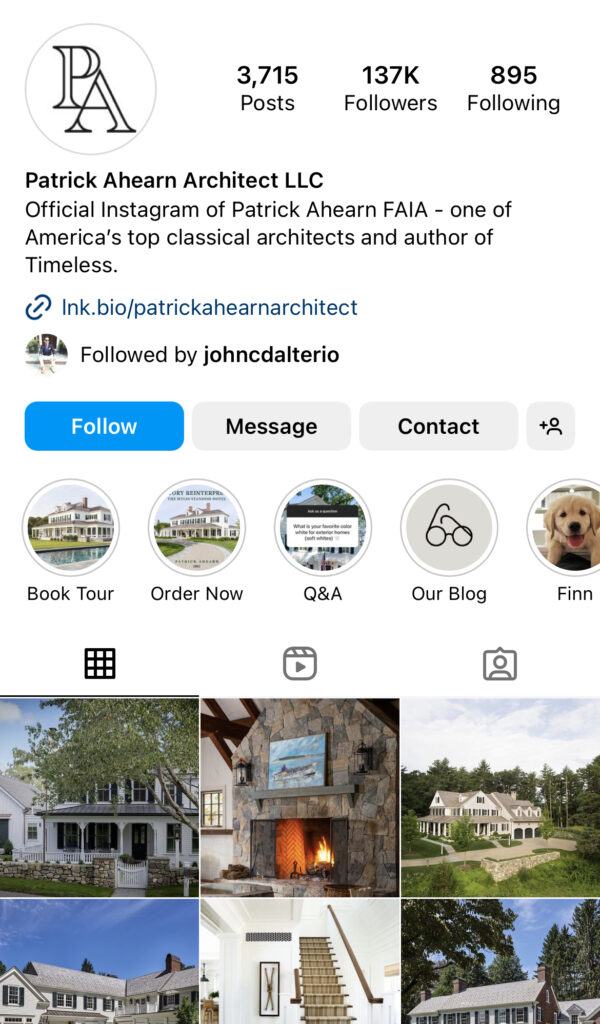

Content Marketing for Architects
Content marketing for architects is about creating and sharing materials (like articles, videos, and images) that provide value to your audience. It's not directly about selling your services but about establishing your firm as knowledgeable and trustworthy.
Types of Content You Can Create:
- Blog Posts: Write about topics that potential clients might find interesting or useful – like design trends, how-to guides, or insights into the architectural process.
- Case Studies: Showcase your past projects in detail. Talk about the client's needs, your design process, and the outcome. This not only shows off your skills but also helps potential clients imagine what you could do for them.
- E-books or Guides: These can be more comprehensive and cover topics like 'Choosing the Right Architect' or 'Understanding the Architectural Process.' An informative and engaging e-book or guide can also act as a great "lead magnet" to give in exchange for someone's contact information, which brings us to our next point.
Email Marketing for Architects
Email marketing is about using emails to communicate with potential and existing clients. It's a direct line to your audience and can be very effective when done right.
Building Your Email List: What It Is and How to Do It
Building an email list means collecting email addresses from people interested in your architecture services. This is your audience - the people you will communicate with directly through email.
How to Build Your List:
- Offer Value on Your Website: This can be done by providing something that your website visitors would find useful. For example, a free guide on 'How to Choose the Right Architect' or a newsletter with insights into architectural trends. When visitors enter their email address to get these resources, they’re added to your email list.
Creating Effective Email Campaigns
An email campaign is a series of emails sent to the people on your list. The goal is to engage with your audience, keep them informed, and keep you top of mind so they choose you for their next project or send you referrals.
How to Create Your Campaign:
- Personalization: Start emails with the recipient's name to make it feel more personal. Also, understand that different people might be interested in different types of information. For instance, someone looking to build a new home might be interested in different content than a commercial developer. Segmenting your list means organizing it so you can send more relevant emails to different groups.
- Mix of Content: No one likes getting constant sales pitches. Your emails should be a mix of different types of content. This could be updates on your latest architectural projects, news in the architecture world, tips on design, or even personal stories about your experiences as an architect. This variety keeps your audience engaged and helps establish your firm as a knowledgeable authority in the field.
- Clear Call-to-Action (CTA): A CTA is an instruction to your reader on what to do next. It could be a request to read your latest blog post, to schedule a consultation, or to download a more detailed guide from your website. The key is to make it clear and simple – tell your readers exactly what you’d like them to do and make it easy for them to do it.
By understanding and applying these basic principles of email marketing, your architecture firm can build a more direct and personal connection with potential and existing clients, which is invaluable in growing your business.
Leveraging Technology in Marketing for Architects
In the world of architecture, embracing technology in your marketing isn't just cool – it's crucial. Let’s talk about a couple of tech-savvy ways to up your marketing game.
Virtual Tours and 3D Presentations: Why They're Game-Changers
- Bring Your Designs to Life: Virtual tours and 3D presentations allow potential clients to 'walk through' your designs before they're even built. It's like giving them a pair of magic glasses to see into the future of their project.
- Showcase Your Work in Detail: This technology lets you highlight the intricacies and unique aspects of your designs in a way photos alone can't.
- Stand Out from the Crowd: Offering virtual tours can set your firm apart, showing that you're not just up to date with the latest technology, but also keen on providing an immersive experience.
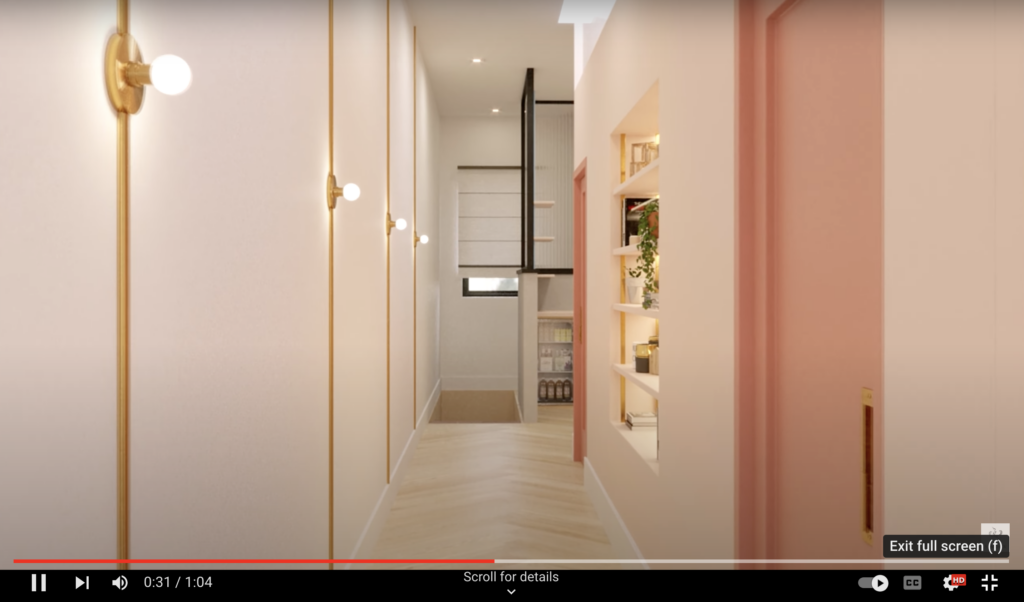

Using Project Management and CRM Tools for Marketing Efficiency
- Project Management Tools: These are like your digital toolbox for organizing and managing your work. They help keep track of deadlines, collaborate with your team, and manage your projects more efficiently. Tools like Clickup or Asana can be a lifesaver for keeping everything in order.
- CRM (Customer Relationship Management) Tools: Think of CRM tools as your digital Rolodex that's supercharged. They help you manage your interactions with current and potential clients. With CRM tools like Salesforce or HubSpot, you can track client information, communication history, and even project status all in one place. This means you can market more effectively to your clients, understanding their needs and history with your firm.
Analyzing and Adjusting Your Strategies
So, you've implemented some digital marketing strategies. Great! But how do you know if they're working? That's where metrics and analytics come in.
The Importance of Metrics and Analytics in Digital Marketing
- Measure Your Success: Metrics and analytics are like the scoreboard in a game. They tell you how well your marketing strategies are performing. Are people visiting your website? How many are filling out the contact form? These are the kinds of questions metrics can answer.
- Understand Your Audience: Analytics can also give you insights into who your audience is, what they like, and how they interact with your content.
How to Use Data to Refine and Improve Marketing Efforts
- Review Your Metrics Regularly: Tools like Google Analytics can show you how much traffic your website is getting, where it’s coming from, and what people are doing on your site. Regularly checking these metrics helps you understand what's working and what's not.
- Make Adjustments Based on Data: Let’s say you notice that your blog posts about sustainable design are getting a lot of attention. You might decide to focus more on that topic in your future posts or even in your project pitches.
Test and Learn: Digital marketing is a constant learning process. Don't be afraid to experiment. Try different things and see how your audience responds. Then, use what you learn to make your marketing even better.
Remember, in digital marketing for architects, it's not just about doing; it's about analyzing and adjusting. By leveraging technology and paying attention to the data, you can make informed decisions that lead to more effective marketing and, ultimately, more growth for your firm.
Building a Strong Brand Identity Online
So, you've dabbled in the digital marketing world – great! But let's chat about something that's often overlooked: your online brand identity. This is more than just a logo or a catchy tagline; it's about the whole vibe of your architecture firm online.


Crafting Your Brand Voice and Visual Style
- Find Your Voice: Think of your brand voice as the personality of your firm. Is it friendly and approachable? Sophisticated and professional? This voice should echo in all your content, from website text to social media posts.
- Consistency is King: Your visual style needs to be consistent. Choose a color scheme, fonts, and imagery style that reflects your architectural style and stick with it across all platforms. It’s like creating a visual language that speaks 'you.'
Telling Your Brand Story
- Share Your Journey: People love stories, especially ones that are authentic and inspiring. Share your firm’s journey, your design philosophy, and what makes you tick. It makes your brand relatable and memorable.
- Client Testimonials and Stories: Happy clients are your best advocates. Share their stories and testimonials to add credibility and a personal touch to your brand.
If you want a more in depth look at building a strong architecture brand, feel free to read up on our previous post: Building a Strong Online Brand with Architecture Website Design [Plus Examples]
Future-Proofing Your Digital Marketing Strategy
The digital world is always on the move, and keeping up can feel like trying to build on shifting sands. Here's how to make sure your digital marketing strategy stays strong and relevant, no matter what the future holds.
Embracing Emerging Technologies
- Stay Curious: Keep an eye on tech trends. Could virtual reality be the next big thing in showcasing architectural designs? How can AI help in personalizing client experiences? Being open to new technologies can give you an edge.
- Experiment and Learn: Don’t be afraid to try out new tools and platforms. Maybe a new social media platform could be the perfect place to showcase your designs.
Adapting to Changing Consumer Behaviors
- Listen to Your Audience: Use tools like social media analytics to understand what your audience likes and how they interact with your content. Stay in tune with their evolving preferences.
- Be Flexible: The ability to adapt is crucial. If you notice a shift in what your audience is looking for, be ready to tweak your strategy.
Sustainable and Ethical Marketing
- Go Green with Your Marketing: More people are looking for eco-friendly options in every aspect of their lives, including architecture. Highlight sustainable aspects of your projects and practices.
- Ethical Practices Win: Transparency and ethical practices in your marketing can set you apart and build trust with your audience.
Balancing Long-Term Goals with Flexibility
- Have a Vision: Know where you want your digital marketing efforts to take you. Setting clear, long-term goals helps in creating a focused strategy.
- Stay Agile: Keep an eye on the market and be ready to pivot your strategy if needed. It’s about balancing a clear vision with the ability to embrace change.
Our Top 10 Tips to Supercharge Your Architectural Marketing Tactics
Starting a digital marketing journey might feel daunting, but it’s like building a structure – start with a solid foundation and build up from there. Here are ten practical tips to help your architecture firm stand out in the digital world:
- Create a Professional Website: Your website is your digital portfolio. Make sure it's professional, easy to navigate, and showcases your best work. Include a portfolio section, your services, contact information, and a bit about your firm’s story.
- Set Up and Update Your Google My Business Listing: This free listing increases your visibility on Google searches and Maps, particularly for local searches. Keep it updated with your contact details, business hours, and recent project photos.
- Focus on Local SEO: Optimize your website for local searches. This means including location-specific keywords, like “architects in [city],” and getting listed in local directories.
- Use High-Quality Images: Whether it’s on your website or social media, high-resolution images of your projects can attract potential clients and give a clear view of your work quality and style.
- Engage with Social Media: Create profiles on platforms relevant to your audience, like Instagram, Pinterest, and LinkedIn. Share updates, interesting content, and engage with your followers to build a community around your brand.
- Start a Blog: Share your insights on architecture, design trends, or case studies of your projects. This not only helps in SEO but also establishes you as a thought leader in your field.
Implement Email Marketing: Regular newsletters or updates can keep you in touch with your clients and prospects. Share news, tips, and updates about your firm. - Encourage Online Reviews and Testimonials: Positive reviews from past clients can significantly boost your credibility. Encourage satisfied clients to leave reviews on Google and your social media pages.
- Leverage Networking Opportunities: Attend industry events or webinars, and engage with peers and potential clients online. Networking can open doors to new opportunities and collaborations.
- Regularly Analyze Your Performance: Use tools like Google Analytics to track your website’s traffic and understand your audience better. Adjust your strategies based on what works and what doesn’t.
By following these tips, you can build a strong digital presence that not only highlights your expertise but also connects you with the right audience, much like creating the perfect blueprint for a successful architectural project.
Wrapping Up: Your Blueprint for Digital Success
That's a wrap on our digital marketing for architects deep dive! Think of this as your blueprint for building a robust online presence that mirrors the creativity and precision of your architectural work. Step by step, piece by piece, your digital strategy can become a structure just as impressive as your physical projects.
Ready to Build Your Digital Legacy?
Is your firm prepared to redefine its digital presence? At Just Digital, we don’t just understand digital marketing; we breathe life into it, creating strategies as unique and impactful as your designs. Don't let your firm blend into the digital background. Let's collaborate to construct a vibrant, engaging online presence that captures the essence of your architectural expertise. Let's connect and start building your digital legacy today.












